SPECIAL TOPIC
Land Seismic






EAGE NEWS President’s new year message


TECHNICAL ARTICLE The Dutch SCAN geothermal exploration project






CROSSTALK What 2023 has in store for geoscenice

VOLUME 41 I ISSUE 1 I JANUARY 2023
OUR PLANET. FROM A NEW PERSPECTIVE.

cgg.com/geoverse
SE E THINGS DI FF ERE NT LY
CHAIR EDITORIAL BOARD
Gwenola Michaud (Gwenola.Michaud@cognite.com)
EDITOR
Damian Arnold (editorfb@eage.org)
MEMBERS, EDITORIAL BOARD
• Lodve Berre, Norwegian University of Science and Technology (lodve.berre@ntnu.no)
• Satinder Chopra, SamiGeo (satinder.chopra@samigeo.com)
• Anthony Day, PGS (anthony.day@pgs.com)
• Peter Dromgoole, Retired Geophysicist (peterdromgoole@gmail.com)
• Rutger Gras, Consultant (r.gras@gridadvice.nl)
• Stephen Hallinan, CGG Stephen.Hallinan@CGG.com
• Hamidreza Hamdi, University of Calgary (hhamdi@ucalgary.ca)
• Clément Kostov, Freelance Geophysicist (cvkostov@icloud.com)
• John Reynolds, Reynolds Geo-Solutions Ltd (jmr@reynolds-geo.com)
• James Rickett, Schlumberger (jrickett@slb.com)
• Peter Rowbotham, Apache (Peter.Rowbotham@apachecorp.com)
• Pamela Tempone, Eni (Pamela.Tempone@eni.com)
• Angelika-Maria Wulff, Consultant (gp.awulff@gmail.com)
EAGE EDITOR EMERITUS
Andrew McBarnet (andrew@andrewmcbarnet.com)
PUBLICATIONS MANAGER
Martha Theodosiou (mtu@eage.org)
MEDIA PRODUCTION
Saskia Nota (firstbreakproduction@eage.org)
PRODUCTION ASSISTANT
Ivana Geurts (firstbreakproduction@eage.org)
ADVERTISING INQUIRIES corporaterelations@eage.org
EAGE EUROPE OFFICE
Kosterijland 48
3981 AJ Bunnik
The Netherlands
• +31 88 995 5055
• eage@eage.org
• www.eage.org
EAGE MIDDLE EAST OFFICE
EAGE Middle East FZ-LLC
Dubai Knowledge Village
Block 13 Office F-25 PO Box 501711
Dubai, United Arab Emirates
• +971 4 369 3897
• middle_east@eage.org
• www.eage.org
EAGE ASIA PACIFIC OFFICE
UOA Centre
Office Suite 19-15-3A
No. 19, Jalan Pinang
50450 Kuala Lumpur
Malaysia
• +60 3 272 201 40
• asiapacific@eage.org
• www.eage.org
EAGE AMERICAS SAS
Edificio Centro Ejecutivo Santa Barbara
Av. Cra. 19 #118-95 - Office: 501
• +57 310 8610709
• americas@eage.org
• www.eage.org
EAGE MEMBERS CHANGE OF ADDRESS NOTIFICATION
Send to: EAGE Membership Dept at EAGE Office (address above)
FIRST BREAK ON THE WEB www.firstbreak.org
Editorial Contents
33
Dutch SCAN Geothermal Exploration Programme — The first three years of 2D seismic acquisition and (re)processing Johannes Rehling, Gitta Zaalberg-Metselaar, Rutger Peenstra, Johannes van den Akker and Marten ter Borgh
Sp ecial Topic: Land Seismic
44 Using ‘Noise-Corrected OVT Fold’ to optimise land seismic acquisition risk, costs, and quality Christof Stork
51 Time-Lapse, multi-component seismic monitoring of geomechanical changes in reservoirs

Tom Davis
59 Signal-to-noise, energy sources, and acquisition techniques: a commentary
S.L. Rowse and Bob Heath
65 Revival of faltered drilling campaign in a marginal field in Barmer Basin, India
Mohammed Soyeb Allam, Beauty Kumari, Srimanta Chakraborty and Sreedurga Somasundaram
73 The key to increasing resolution with acquisition
Jason Criss
77 The use of miniaturised seismic sources for reduced environmental impact
Andrea Crook, Mostafa Naghizadeh, Peter Vermeulen, Devin Gagnier and Carl Reine
85 Reducing (or at least quantifying) the weather-related risk of onshore seismic surveys
Tim Dean and Pieter Claassen
FIRST BREAK I VOLUME 41 I JANUARY 2023 1 FIRST BREAK ® An EAGE Publication
ISSN 0263-5046 (print) / ISSN 1365-2397 (online)
and quality.
12 Using ‘Noise-Corrected OVT Fold’ to optimise land seismic acquisition risk, costs,
cover: Sercel Nomad 65 Neo broadband vibrator operating in desert conditions. 3 EAGE News 17 Personal Record Interview 20 Crosstalk 23 Industry News Technical Article
The
90 Calendar
Near Surface Geoscience Division
European Association of Geoscientists & Engineers Board 2022-2023
Esther Bloem Chair
Andreas Aspmo Pfaffhuber Vice-Chair



Micki Allen Contact Officer EEGS/North America
Adam Booth Committee Member
Hongzhu Cai Liaison China
Eric Cauquil Liaison Shallow Marine Geophysics
Deyan Draganov Technical Programme Officer
Wolfram Gödde Liaison First Break
Hamdan Ali Hamdan Liaison Middle East
Vladimir Ignatev Liaison Russia / CIS
Musa Manzi Liaison Africa
Myrto Papadopoulou Young Professional Liaison
Catherine Truffert Industry Liaison


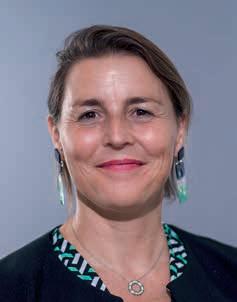
Panagiotis Tsourlos Editor in Chief Near Surface Geophysics
Florina Tuluca Committee member

Oil & Gas Geoscience Division
Lucy Slater Chair
Yohaney Gomez Galarza Vice-Chair
Michael Peter Suess Immediate Past Chair; TPC
Erica Angerer Member
Wiebke Athmer Member
Juliane Heiland TPC
Tijmen Jan Moser Editor-in-Chief Geophysical Prospecting

Adeline Parent WGE SIC Liaison
Francesco Perrone Member
Matteo Ravasi YP Liaison
Jonathan Redfern Editor-in-Chief Petroleum Geoscience

Giovanni Sosio DET SIC Liaison
Aart-Jan van Wijngaarden Technical Programme Officer
SUBSCRIPTIONS
First Break is published monthly. It is free to EAGE members. The membership fee of EAGE is € 80.00 a year including First Break, EarthDoc (EAGE’s geoscience database), Learning Geoscience (EAGE’s Education website) and online access to a scientific journal.
Companies can subscribe to First Break via an institutional subscription. Every subscription includes a monthly hard copy and online access to the full First Break archive for the requested number of online users.
Orders for current subscriptions and back issues should be sent to EAGE Publications BV, Journal Subscriptions, PO Box 59, 3990 DB, Houten, The Netherlands. Tel: +31 (0)88 9955055, E-mail: subscriptions@eage.org, www.firstbreak.org.
First Break is published by EAGE Publications BV, The Netherlands. However, responsibility for the opinions given and the statements made rests with the authors.
COPYRIGHT & PHOTOCOPYING © 2023 EAGE
All rights reserved. First Break or any part thereof may not be reproduced, stored in a retrieval system, or transcribed in any form or by any means, electronically or mechanically, including photocopying and recording, without the prior written permission of the publisher.
PAPER
The publisher’s policy is to use acid-free permanent paper (TCF), to the draft standard ISO/DIS/9706, made from sustainable forests using chlorine-free pulp (Nordic-Swan standard).
2 FIRST BREAK I VOLUME 41 I JANUARY 2023
Caroline Le Turdu Membership and Cooperation Officer
Peter Rowbotham Publications Officer
Pascal Breton Secretary-Treasurer
Aart-Jan van Wijngaarden Technical Programme Officer
Esther Bloem Chair Near Surface Geoscience Division
Lucy Slater Chair Oil & Gas Geoscience Division
Edward Wiarda Vice-President
Jean-Marc Rodriguez President
Maren Kleemeyer Education Officer
Looking forward to a better year in 2023
May I as your Association president take this moment to wish a very Happy New Year to all our members, partners, and friends as we begin 2023!
these fundamental issues particularly in the energy field. I can tell you that your Board takes very seriously the responsibility implied. Reflecting the changing composition of our membership, EAGE’s strategy going forward is clear. We need to pursue a path that puts sustainable development at the heart of our organisation and decisions. The task can be simply defined: help to produce more energy, emit less carbon, and become more sustainable. By focusing on sustainable development as the key to the evolution of our association, we are making a statement to society about how we intend to act for a better future.
clear how EAGE can organise to meet the needs of the energy transition era.
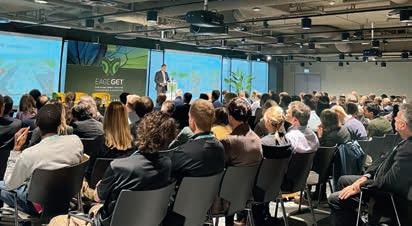
In the meantime at the start of this New Year I would like to particularly acknowledge the many individuals who give of their time on a voluntary basis to make our association such a valuable professional community. On behalf of all members, I would like to thank all those who serve on our many committees including event organisation, contributors to our education initiatives, and the editors and reviewers of our growing portfolio of publications.
2022 was anything but a normal year. We have faced substantial headwinds. To cite just a few, we are dealing with the aftermath of the Covid-19 pandemic; the effects of the Russia-Ukraine war; the subsequent energy crisis and inflation rates at a 30-year high.

However, the challenge to all of us has not changed. Each and every year, we should start the year with the same resolution: to grow in resilience as individuals and as a society. No one said this is always easy, but I am hopeful that 2023 can bring some positive solutions to the issues we face.
As part of a professional society our members are deeply involved in some of

Our ambition in 2023 is to make sure that our members are the heart of this transformation. Together we will be better – not just a quick fix, but a change of paradigm, a leap into the future. In this respect the Board is coming forward with some proposals (see P. 12 for details of Special AGMM in February) which make
I must also express my personal appreciation for the positive collaboration I have experienced with my fellow Board members and of course with our entire staff whose work over the year has been quite admirable.

I sincerely hope I will see many of you at our Annual Meeting in Vienna. In the meantime, allow me in my native tongue to wish everyone, Bonne Année!
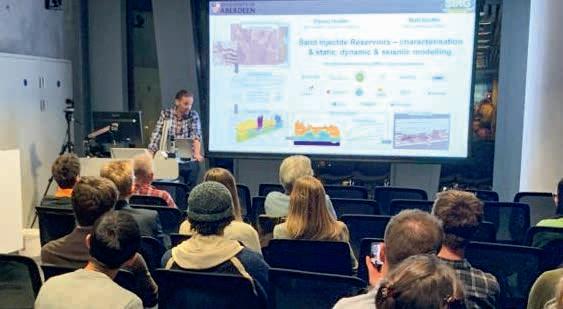
FIRST BREAK I VOLUME 41 I JANUARY 2023 3 GET advances transition vision 08 LC Aberdeen year in focus 10 Entries sought for Photo Contest 12 HIGHLIGHTS
Jean-Marc Rodriguez, president, EAGE.
Dedicated Sessions will be a key feature of Vienna Annual Meeting







to make a contribution to share your expertise to thousands of professionals and academics. You have until 15 January, 23:59 CET to submit your papers at eageannual.org.
• Going Big – Scaling machine learning applications in geoscience and engineering
Our Annual Meeting in Vienna this year will once again bring together some of the greatest minds in our community to showcase the latest developments, newest technologies, state-of-the-art products and innovative services in the oil and gas and energy industries.
The Technical Programme of EAGE Annual 2023 will feature engaging presentations with topics ranging from geophysics and geology, mining and infrastructure, integrated subsurface and reservoir engineering, to digitalisation and energy transition. This is clearly reflected in the Call for Abstracts which is still open for submissions. Don’t miss your chance
An added feature of the Technical Programme will be a series of more than ten Dedicated Sessions being organised to cover a range of disciplines. Most of the Dedicated Sessions will be led by representatives of our various EAGE Technical Communities – the network of dedicated and energetic members committed to promoting innovation and technical progress in their respective fields. These sessions include:
• Energy Transition and Net Zero Emissions: The role of geoscience and engineering to tackle climate change and ensuring energy safety for future generations

• Deep-Sea Minerals – Thinking outside the standard exploration box





















































































• Petroleum Systems of Central and Eastern Europe

• Future of Basin Modelling in the Energy Transition

• Risk Assessment of Geohazards: Multidisciplinary novel approaches and technologies
• Drone Remote Sensing and Drone Geophysics for Near-Surface Applications

Some other Dedicated Sessions will be conducted by professors and experts in the field, namely:













































• Exploration of the Moon, Mars and Beyond Using Geophysical Methods












• Advances in Digital Rock Physics














• Characterisation of Geological Risks in Geothermal Projects
• Post-Mining in Energy Transition








• Legacy Wells: Threats and opportunities for energy and CO2 storage
There will also be one Dedicated Session specifically designed to showcase some of the best papers published recently in the Petroleum Geoscience journal.
If you are interested in contributing content to one of the Dedicated Sessions, you are welcome to email abstracts@ eage.org for more details and availability. Additional information and latest updates on the Dedicated Sessions can be found on eageannual.org.

4 FIRST BREAK I VOLUME 41 I JANUARY 2023 EAGE NEWS
Season’s Greetings and a Happy New Year! 23062-Seasons Greetings 2022/2023_FINAL (filler).indd 1 14/12/2022 08:48 ADVERTISEMENT
Presentation in a conference dome, Madrid 2022.
SUPERIOR IMAGING. INTUITIVE VISUALISATION. DUG INSIGHT.






Modern workflows need modern software. DUG Insight is a full-service, interactive software platform for advanced seismic data processing and imaging, interpretation, visualisation and QI—across land, marine and ocean-bottom surveys. DUG Wave FWI provides revolutionary least-squares imaging solutions. User experience is our priority. Software must be intuitive. DUG Insight feels like a single package designed by a single team, built on a single platform. Because it is.



Let DUG Insight's state-of-the-art technology help you make your next discovery.


•ISO 27001• OC M PASSASSURANCESERV SEC •ISO 9001• OC M PASSASSURANCESERV SEC
dug.com/insight For more information contact info@dug.com
Community and Student activities high on the agenda at the EAGE Annual in Vienna

With a new year comes the next edition of our highly-anticipated 84th EAGE Annual Conference & Exhibition! And as always, exciting Community and Student programmes are being planned for you. Here are some of the highlights.
Career Advice Centre
Our Community Programme starts with career development opportunities that will help you stand out from the crowd, such as the CV Check, while the Speed Mentoring will offer a great possibility to connect with other professionals from all over the world across various disciplines of geoscience and engineering.
Are you ready to face the energy transition challenges? This year we will feature a new interactive session dedicated to guide your journey. Learn more about the skills required to navigate the changes demanded by the industry with our Decarbonisation and Energy Transition Technical Community and company representatives.
Additionally, if you are already participating in the EAGE Mentoring Programme 2022, you will also have a space to meet your mentor or mentee. And if you would like to contribute to the life of the Association and make a difference in your field, you can learn how you can get involved by visiting our Volunteering Corner at the EAGE Community Hub.
Special Interest Communities
The EAGE Women in Geoscience and Engineering community will be featuring a special session focused on women’s leadership role in transitioning to a more sustainable future. The session will also cover topics that showcase how women contribute to achieving sustainable development goals and what it means in tackling energy transition.
The Young Professionals community is preparing a special session to discuss specific challenges and opportunities for those aged under 35 who are already making, or may soon need to make, important decisions for their future careers. Meet leaders and peers from all over the world, and take home some constructive ideas for your upcoming professional steps.
Geosecrets of Austria
Whether you are returning to Vienna or visiting for the first time, you will find the ‘City of Dreams’ can claim an exciting scientific atmosphere and a rich geoscience landscape. Together with a team of local experts we will be exploring some of its most interesting features
EAGE
Hackathon 2023
If you are passionate about machine learning, this challenge is for you. Guided by the EAGE AI Committee, you are welcome to join a team and explore innovative solutions over the course of two creative and fun days.
Student Programme
Students will enjoy a dedicated programme aimed at helping them to build their careers, network with potential future employers, test their knowledge and have fun.
If you are one of our younger members, get better acquainted with the industry by meeting a selection of exhibiting companies and finding out what they have in store during our Exhibition Tour. In addition, at the Education Hunt, you will have the chance to win great prizes.
You are also invited to join a Networking Cafe, where you can connect with professionals and company representatives in an informal atmosphere. You may enhance your experience with a fascinating halfday field trip to the OMV Innovation & Technology Centre in Gänserndorf, Austria.
This is also call for all EAGE Student Chapters worldwide. Your representatives are invited to meet and talk about their experiences and best practices in our Annual Student Chapter Meeting. Held fully in-person, it will offer great opportunities for social interaction with your peers.
In addition to all this, the final round of the Laurie Dake Challenge 2023 and the EAGE Geo-Quiz will be held during the Annual, so start preparing now and don’t miss the chance to be part of the world’s best student teams or to watch them in action.
Start planning your trip to Vienna and don’t forget to visit the EAGE Community Hub!
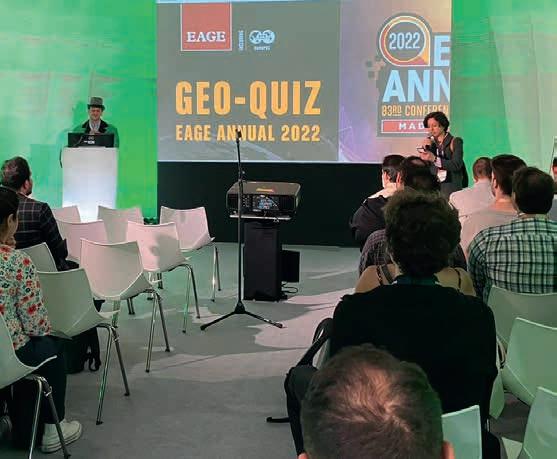
6 FIRST BREAK I VOLUME 41 I JANUARY 2023 EAGE NEWS
Student Geo-Quiz contest underway.
Career development opportunities, student competitions and special sessions are scheduled for you.
Chapter hears talks on Dutch dike safety



Dong Zhang (EAGE Local Chapter Netherlands) writes: EAGE Local Chapter Netherlands invited geoscientists and students to join our inspiring live event held at Deltares on 12 October 2022. The keynote speakers from Deltares, Chris Bremmer and Marc Hijma, reviewed the current shallow geophysical research done by Deltares, and the importance of geology for dike safety with case studies.
Bremmer focused on geophysical applications which offer innovative solutions for shallow subsurface imaging for water management and sustainable infrastructure design. Some of the technical challenges include the transition from laboratory experiments to larger scale areas, the utilisation of data fusion and data science, the uncertainty and value of information, and the principles behind new sensors and their measurement. Bremmer showcased a series of case studies on how Deltares addresses these challenges, e.g., advanced testing facilities for new geophysical tools, different platforms to enhance the scale for field surveying, drone measurements for dike safety, distributed acoustic sensing using fibre optics for rail maintenance, data fusion for the characterisation of levees, and multi-sensor surveying for sinkhole detection in the city centre of Amsterdam.
Marc Hijma spoke on the importance of geology in dike safety. He started by describing the fundamental concept of backward erosion piping, an important failure mechanism for flood defences. He then explained that current assessment models in the Netherlands for backward erosion piping are based on tests using homogeneous sieved sands. This completely ignores the actual geology surrounding dikes since, in large parts of the Netherlands, the sand below flood defences is composed of tidal sand. Finally, Hijma presented small-scale pilot tests and two field studies in Hedwigepolder. These tests showed the different behaviour of tidal sands, which resulted in more resistance to piping than fluvial sand. He concluded that understanding the sand types, fluvial systems, and geological structure of the subsurface in dike areas is key to assessing dike safety, emphasising how the answers lie in the field.
Many questions and animated discussions followed the technical talks. Some attendees were curious about the details of fibre optics for rail maintenance. Others were interested in the logistics when Deltares applied sinkhole detection methods in the city centre of Amsterdam. The dike safety case study interested most of the audience, and many detailed field implementations were asked.
EAGE Online Education Calendar
Stay informed about the EAGE
Local Chapter Netherlands activities through the website page www.eagelcnetherlands.org or the LinkedIn page www.linkedin.com/ groups/13690220/. Become a member by sending an email to eageLCNetherlands@gmail.com.
FOR THE
25-27
FIRST BREAK I VOLUME 41 I JANUARY 2023 7 EAGE NEWS
FOR THE FULL CALENDAR, MORE INFORMATION AND REGISTRATION
VISIT WWW.EAGE.ORG AND WWW.LEARNINGGEOSCIENCE.ORG. * EXTENSIVE SELF
MATERIALS AND INTERACTIVE SESSIONS
THE INSTRUCTORS:
START AT ANY TIME VELOCITIES, IMAGING, AND WAVEFORM INVERSION - THE EVOLUTION OF CHARACTERIZING THE EARTH’S SUBSURFACE,
I.F. JONES
SELF PACED COURSE 6 CHAPTERS OF 1 HR GEOSTATISTICAL RESERVOIR MODELING, BY D. GRANA SELF PACED COURSE 8 CHAPTERS OF 1 HR CARBONATE RESERVOIR CHARACTERIZATION,
L. GALLUCCIO SELF
COURSE 8 CHAPTERS OF 1 HR 16-18 JAN SUB-SURFACE UNCERTAINTY EVALUATION (SUE) BY MANISH AGARWAL IOSC 4 HRS/DAY - 4 MODULES 17 JAN17 FEB DEVELOPING DEEP LEARNING APPLICATIONS
THEORY
PLEASE
PACED
WITH
CHECK SCHEDULE OF EACH COURSE FOR DATES AND TIMES OF LIVE SESSIONS
BY
(ONLINE EET)
BY
PACED
OILFIELD: FROM
TO REAL WORLD
PROJECTS
BY BERNARD MONTARON
EXTENSIVE ONLINE COURSE
16 HRS (INCL. 5 WEBINARS OF 1-2 HRS EACH)
JAN SEISMIC DIFFRACTION – MODELING, IMAGING AND APPLICATIONS BY TIJMEN JAN MOSER IOSC
4 HRS/DAY 5 MODULES
Chris Bremmer and Marc Hijma presenting at Deltares for LC Netherlands.
GET 2022 advances the energy transition vision
Conference co-chairs Giovanni Sosio (SLB), Léon Beugelsdijk (Shell) and Tobias Rudolph (THGA) share their thoughts on the recently concluded 3rd EAGE Global Energy Transition Conference & Exhibition (GET 2022).
players – not only service and product providers but also research institutions. Most significantly for the participants, it enabled different modes of participation, much in line with the EAGE’s desire to couple the sharing of technical knowledge with a broader discussion on the skills and solutions available in the geoscientific community that are needed to realise the energy transition.
The third edition of the EAGE’s flagship conference on energy transition, held on 7-9 November in The Hague, has many reasons to stand out. First of all, much to our delight as co-chairs, it has been the first to be held as a physical event, after two editions online; secondly, it has been supported not only by the generosity of the sponsors, but also by the commitment of our sister society, SPE, and its local section; and finally, it proposed a wide
roster of keynote speakers and three dynamic panel discussions to foster the exchange of thoughts and views beyond the more traditional scientific debates.
The opportunity to meet in person attracted more than 250 delegates, visibly enjoying the renewed occasion for networking – but also for more lively discussions around the presentations and panels. The event was also able to host an exhibition from a diverse set of
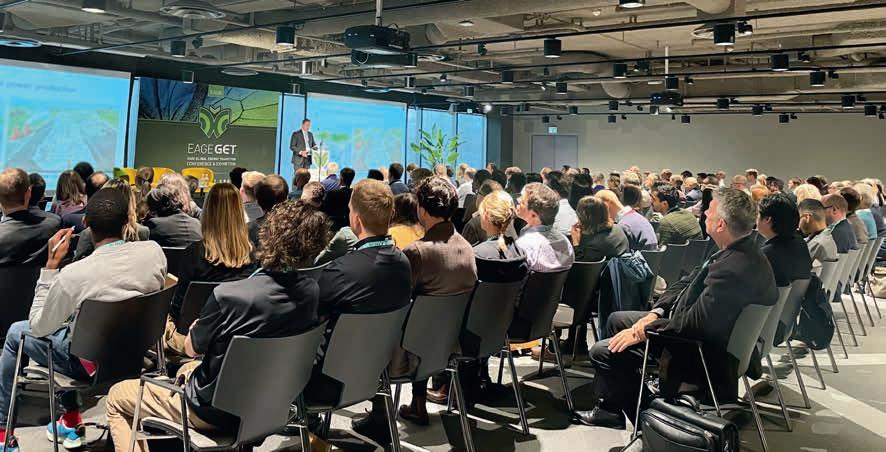
The two dedicated sessions in the conference, in particular, deserve a description. During the session on ‘Navigating Career Challenges and Opportunities’, three members of the EAGE’s special interest community on Decarbonization and Energy Transition (DET) introduced its coaching initiative – soon to be rolled out as a training course by EAGE – to help geoscientists and engineers face the career changes inherent in the energy transition: far from being a dry presentation of the course programme, it engaged participants by sharing and comparing experiences openly and so succeeded in its objective to establish a positive community environment.
What participants had to say
‘This was an ideal place to get up to speed in what is happening in the energy transition regarding geoscience and engineering topics. It was also an opportunity to meet the community, and particularly after two years where we had to keep it to an online event, it has been very exciting to finally meet people face to face. People are utilising this opportunity, which was one of the main drivers for GET, namely, to interact across different applications, across disciplines and seek collaboration opportunities. That’s just great to experience.’ – Karin de Borst, geomechanicist, Shell.
‘I’m looking very much forward to see how EAGE will continue to address the different segments of the future energy system.’ – Jeroen Schuppers, deputy head of unit for clean energy transition, European Commission – DG Research & Innovation.
‘The GET conference was very well organised and extremely productive for me. I ended up with many more new contacts and opportunities than I expected. It was also nice to visit The Hague again.’ – Dr Gehrig Schultz, chief operating officer, geoscience, EPI Group.

8 FIRST BREAK I VOLUME 41 I JANUARY 2023 EAGE NEWS
Great attention from the audience.
A follow-up coaching session at the Community Hub was also scheduled for participants. The Closing Session, organised by the young professionals (YP) of the Netherlands section of SPE, put the delegates to work together again, interacting to distil the findings of three days of debates and identify the most impactful items to continue the discussion – and the work.
The involvement of the sponsors –Shell and SLB – and of SPE was reflected in the contribution of these players, committed to the energy transition, as members of the technical committee, speakers in the technical programme, and panellists during the plenary sessions. SPE also contributed their point of view on sus-
tainability, with the participation of its members in several panels, energising the audience with an interactive and insightful closure of the conference.



















More than 60 technical talks and 20 posters in the programme reflected the solid technical tradition of EAGE. Geophysics, not surprisingly, took the lion’s share of the geoscientific presentations with insights on risks, sustainability, and social aspects of the transition to a different energy mix.









To crown the technical debate, six speakers provided their points of view in front of the plenary audience, driven by three key topics – sustainability and social license to operate, knowledge development and training, and the role of the industry. Their keynote talks were complemented by three lively panels, brilliantly moderated to involve the audience in the debate.
learn more about what activities they currently have planned. Likewise, interested mentees and mentors present at GET 2022 signed up for the EAGE Mentoring Programme 2022 during the conference.





















































































The Icebreaker Reception on the exhibition floor and Conference Evening at Madurodam, the Dutch miniature themed park, marked opportunities for the full community to meet and network outside the technical sessions.
As EAGE is strengthening its engagement with energy transition, it will aim to share with its members the technical knowledge needed to accelerate transition, together with broader support for geoscience applications which can ensure that transition happens in a sustainable, just and truly global way. The GET conference seems to be the perfect forum for this sharing, even more so when we’re getting
Jean-Marc Rodriguez, EAGE president and vice president exploration, Asia Pacific at TotalEnergies, said: ‘I’m very pleased to be here and to see all the energy. We are at EAGE actively working on different domains to progress the transition: the DET which is a community dedicated to the energy transition, and Geoenergy journal to be launched early next year. We also want to be member centric and dedicate our time to help the existing generation and also the young professionals and future graduates to see all the interest in geoscience for the energy transition. I’m sure that GET will be far more extended in terms of contribution and participation. And I hope we will have new topics also.’

In the framework of GET 2022, Geoenergy – the new co-owned journal of EAGE and the Geological Society – was introduced during the opening address, encouraging presenters to submit their fully developed conference abstracts. Two journal sessions were organised at the Community Hub where attendees had the opportunity to ask questions about all EAGE publications. Most questions had to do with Geoenergy. All in all, there was a lot of interest, which is very encouraging.
Participants were also given a chance to meet with the representatives from the EAGE Local Chapter Netherlands and Decarbonization and Energy Transition community at the Community Hub to

The exhibition floor provided an excellent opportunity for networking.

together; and it’s been both a pleasure and an honour to be serving as chairpersons for this crucial edition.
If you missed the event, take a look at the recap on eageget.org.































































































































































FIRST BREAK I VOLUME 41 I JANUARY 2023 9 EAGE NEWS
Edésio Miranda-Barbosa (Svåheia Eiendom) talked about the impact of policy on geoscience and engineering.
L-R: Giovanni Sosio, Jean-Marc Rodriguez, Léon Beugelsdijk and Tobias Rudolph.
OUR JOURNALS THIS MONTH

Aberdeen Local Chapter’s year in focus
Completing our fourth 2022 evening lecture (and third in-person event) in November, Aberdeen Local Chapter can look back on a variety of topics covered. We started the year with an eye-opening talk from Russell Gray (TotalEnergies) discussing the surprising differences in well depth definitions and their associated uncertainties – drillers/logging while drilling versus wireline. Drillers/LWD depth taken as a tally of pipe lengths is nearly always shallow to true depth without accounting for pipe stretch, whereas wireline stretch correction is more commonly applied. The result of incorrect mixing of depth definitions can have significant impact on field/prospect volumes, and the audience were pleased to share their own horror stories.
a dataset that was used in a 2019 Kaggle competition. Ibe-Enyindah showed us machine learning methods for pre-processing well log data.
We teamed up with the PESGB for our final event in 2022, an evening lecture from Matt Brettle and Dan Holden from the Sand Injectite Research Group based at Aberdeen University. Brettle started with an introduction to

Geophysical Prospecting (GP) publishes primary research on the science of geophysics as it applies to the exploration, evaluation and extraction of earth resources. Drawing heavily on contributions from researchers in the oil and mineral exploration industries, the journal has a very practical slant. A new edition (Volume 71, Issue 1) will be published within January, featuring 11 articles.
Editor’s Choice articles:
• Elastic wave velocities in a granitic geothermal reservoir — Colin
Michael Sayers

• Approaches to decomposing acoustic data — Jakob B.U. Haldorsen
In June we met in person with Ryan Williams (Geoteric) who presented his Distinguished Lecture on AI Seismic Interpretation of vintage seismic data with implications for CCS site characterisation. This talk highlighted the rich seismic database that exists in the UK National Data Repository, and the application of the latest technology to reveal new features. To mark our first physical meeting for two years and the Local Chapter’s fifth birthday, we celebrated with a post-talk curry at Rishi’s (Aberdeen’s top Indian restaurant, no connection with the UK government!).
In September, we tried something new by hearing the end of project presentations from two graduating MSc students – Theo White and Emmanuel Ibe-Enyindah. One of the Local Chapter’s roles is to encourage links with Aberdeen University; the September period represents the sweet spot for catching departing and arriving students, and we were pleased to see a good turnout of students and professionals. White’s talk introduced us to machine learning techniques for predicting earthquake times, based on
injectites, the challenges in creating geocellular models to represent them, and their past and future importance in both oil and gas and geostorage applications. The last slide of Holden’s talk on seismic modelling of these complex geometries very astutely anticipated the audience’s questions on seismic noise, the use of machine learning, and modelling when interpreting the synthetic data to identify the features that can be pulled out.
10 FIRST BREAK I VOLUME 41 I JANUARY 2023 EAGE NEWS
CHECK OUT THE LATEST GP
A great evening lecture from Matt Brettle and Dan Holden on all things sand injectites.
Starting your 2023 journey with EAGE
lications of your journal of preference in EarthDoc, i.e., Basin Research, Geophysical Prospecting, Near Surface Geophysics or Petroleum Geoscience
If you like what you are reading right now, keep in mind that the subscription to First Break, our monthly magazine, is also included in your membership with the objective of keeping you informed with industry news, technical articles and the latest EAGE updates.
Happy New Year and thanks for being part of the EAGE community in 2022! If you haven’t already done so, now’s the time to renew your membership, especially if your resolutions include taking a course, presenting your work at any international conferences or publishing in scientific journals.
Start ticking your checklist by joining us in Vienna, Austria, for the 84th EAGE Annual Conference & Exhibition. Enjoy the reduced member registration fees and connect with geoscience and engineering professionals from all over the world for our flagship meeting entitled ‘Securing a sustainable future together’. Other events where you can save on your attendance are the 2023 EAGE Digital in London next March, or the 2023 Near Surface Geoscience Conference and Exhibition in Edinburgh in September, just to name a few.
Move on with your resolutions by making the most out of the discounted registration rates in our education programmes. Interactive Online Short Courses on ‘Seismic Diffraction – Modelling, Imaging and Applications’ by Tijmen Jan Moser (25-27 January), and ‘Land Seismic Survey Design’ by Paul Ras (8-10 February) are now accepting registrations. Remember that Education Packages are still available for all your learning needs.
By renewing your membership you also support the creation of free learning content, for example the E-Lecture Webinars ‘Unlocking unprecedented seismic resolution with FWI Imaging’ by Zhiyuan Wei and ‘Active and passive 3D seismic survey around the Scrovegni Chapel using

autonomous nodes’ by Ilaria Barone. Such presentations can help you update your knowledge in less than an hour at a time convenient to you. Go to learninggeoscience.org to check them out.
You should also know that, if you start today, your membership will include a free one-year online subscription to Geoenergy, our new co-owned journal. Take advantage of this bonus benefit and learn more about subsurface geoscience and the emerging energy transition field. Geonergy takes its place alongside pub-
Expanding your professional network may be another of your 2023 goals. As an EAGE member, you can join one or more of the EAGE technical communities dedicated to share know-how, experience and latest advances covering a wide range of interests. Check out our website for details.
Last but not least, don’t forget that by renewing your membership, you will maintain your current membership level or advance in the EAGE Membership Recognition Programme. The more consecutive years you are part of our Association, the more benefits you will receive.
Make these New Year Resolutions!
Volunteer with EAGE — There are plenty of opportunities where you can make a difference with your expertise and ideas. Let us know you are interested by contacting communities@eage.org.
Take part in student activities
Join a Community
Our technical communities are continuously expanding. Connect with groups in your field(s) of interest to join conversations, grow your professional network and find relevant initiatives for your career development. Engage with our two new communities, Geohazards and UAV!
Read our new journal Get ready for a brand new technical journal starting this month. With its multi-disciplinary approach to research and case studies in sustainable energies, Geoenergy is bound to become a favorite for many members.
Keep engaged with the EAGE community by engaging with your Student Chapter and joining this year’s exciting activities: the Laurie Dake and the Minus CO2 challenges, the EAGE Geo-Quiz, and our exclusive student webinars and E-Summits.
Support your community
By joining or renewing your EAGE membership you can also donate to the EAGE Student Fund and Green Fund. Doing so will help us develop more activities for the next generation of scientists. Through the EAGE Ukraine Professional Development Fund, you may also support the continuous professional development of Ukrainian students and academic community at this time of crisis.
FIRST BREAK I VOLUME 41 I JANUARY 2023 11 EAGE NEWS
Sharing knowledge at EAGE event.
Invitation to a Special Members Meeting to consider Constitution change
From





Pascal Breton, Secretary-Treasurer, EAGE.
On behalf of the Board, I would like to make this formal invitation to all members to a Special Members Meeting which will take place online on 16 February at 15:00 CET.


As announced during the AGMM 2022 earlier this year, the EAGE Board decided to reconsider our Divisions structure to be more inclusive. We are
proposing an organisation of three Circles of which one will be the Sustainable Energy Circle. To make this happen, the Constitution of the Association needs to be adjusted accordingly for which the approval of the members is needed.
During the Special Members Meeting the Board will introduce modifications
to the EAGE Constitution needed in line with these changes and members will have a possibility to deliberate and ask questions before a vote. Proposed changes to the Constitution and registration to the meeting will be circulated to members and published on the Association website by 15 January.
Entries open for the EAGE/EFG Photo Contest 2023
It’s time to showcase your talent for capturing extraordinary images reflecting any field of geoscience. Entries are now open for the EAGE/EFG Photo Contest 2023.
Held under the theme ‘Legends of Geoscience’, all members of EAGE and EFG’s national associations are invited to submit their photos in the following six subcategories:

Sustainability in Geosciences – images depict how geosciences and society are directly interlinked in addressing sustainability issues, including the responsible use of natural resources, ensuring global health and resilience, improving energy efficiency, processing raw materials, etc.
Women Geoscientists – images focus on women who chose a career in different fields of geosciences.
Landscape and Environment – images portray the beauty and variety of the fascinating geoscience world.
Working together in Geosciences –images show impressions of 2-3 persons collaborating on a topic.
Digitalization and Innovation – images focus on the latest ground-breaking technologies that enable innovation and industry transformation.
The New Generation of Geoscientists – images portray students and young professionals working in different fields of geoscience.
Keep in mind that you may only submit a maximum of two photos. They must be copyright free and meet the following technical quality requirements: high resolution (300 dpi) and minimum 1920 × 1080 pixels. We will also ask you for a nice title for your photograph, when and where the picture was taken, as well as a little story behind the shoot.
Submissions are open from 1 January to 17 March 2023. All entries will be


reviewed by experts considering their relevance to the theme and, of course, the technical quality. After this process, the accepted photos will be published online, and all members of EAGE and EFG will have the opportunity to cast their votes in two rounds: first, for choosing the 12 finalists, and then, for the top three photographs. The 12 best photos of the year will be featured in our communication channels.
The winners will be announced in September 2023, with the images being awarded the ‘Legends of Geoscience’ title, along with great prizes. Start looking for the best shoot and join this year’s Photo Contest!
12 FIRST BREAK I VOLUME 41 I JANUARY 2023 EAGE NEWS
More
available on our website! 30 JAN LAURIE DAKE CHALLENGE FIRST SUBMISSION ONLINE 28 FEB EAGE STUDENT CHAPTER RENEWAL ONLINE EAGE Student Calendar FOR MORE INFORMATION AND REGISTRATION PLEASE CHECK THE STUDENT SECTION AT WWW.EAGE.ORG
information is
Welcome to the 2023 Near Surface Geoscience Conference & Exhibition in Edinburgh
Esther Bloem, NSG Division chair, writes: On behalf of the EAGE Near Surface Geoscience (NSG) Division, I cordially invite you to attend the Near Surface Geoscience Conference & Exhibition 2023 (NSG2023) to be held in Edinburgh, UK, 3-7 September 2023.

We are pleased that the conference will be hosted for the first time in Edinburgh, Scotland’s capital since the 15th century. The city has a medieval Old Town and an elegant Georgian New Town with gardens and neoclassical buildings.
Alongside the 29th European Meeting of Environmental and Engineering Geophysics, will be the 2nd Conference on Hydrogeophysics, the 3rd Conference on Geophysics for Infrastructure Planning, Monitoring and BIM and the 1st Conference on Sub-surface Characterisation for Offshore Wind. Our annual meeting provides a platform to discuss the near surface challenges the world is currently facing. With changing energy sources and an increased awareness of environment and climate, the focus on the near surface as a resource and the wish for minimal negative impact on the near surface has been growing. It makes the conference highly relevant to society as a whole. Topics for the meeting include mining, geotechnics, engineering geology, hydrology, geothermal investigation, environment, archaeology, forensics and soil science.
Over the last years the NSG Division has introduced parallel focused conferences in response to the needs of our

members to provide an environment to move the science and technology forward while also addressing the needs of our society. To continue this success, this year the two topics which are highlighted in two parallel conferences are: hydrogeophysics and infrastructure challenges.
After a successful first Hydrogeophysics parallel conference in Bordeaux 2021, we are happy to continue the discussion around water, environment, agriculture and natural resources in a rapidly changing climate and their implications to build a resilient society. The Hydrogeophysics parallel conference aims to connect the science with the public sectors and governmental entities.
The Infrastructure Planning, Monitoring and BIM (Building Information Modelling) conference joins Edinburgh with a strong regional relevance with several large projects on their way in the UK, e.g., one of the country’s (and Europe’s) largest ever construction projects, the high speed rail connection line between London - Birmingham and further north;
the Lower Thames Crossing, a new highway tunnel crossing the Thames on the east side of London; and the Thames Tideway, a 25 km super sewer for the city of London, built under the river Thames. These projects require mapping archaeology, structural investigation of existing infrastructure, testing ground engineering, and monitoring hydrogeology and tunnelling activity using geophysical and non-destructive testing/monitoring instruments. It is therefore a great opportunity to welcome newcomers including design and civil engineers, city planners and geotechnical communities to take an active role in this conference after successful presences in the Hague 2019 and Bordeaux 2021.
More details on the 1st Conference on Sub-surface Characterisation for Offshore Wind to follow in the next issue, so stay tuned!
Join us and discover both the city and how the near-surface geosciences have advanced, meet your colleagues, expand your network and enjoy the great atmosphere of our event.
If you are interested in participating in the Technical Programme of NSG2023, we encourage you to submit your abstracts for any of the parallel conferences by 25 April 2023. Visit eagensg.org for more information on the topics, submission guidelines and all this year’s event has to offer.
FIRST BREAK I VOLUME 41 I JANUARY 2023 13 EAGE NEWS
DONATE TODAY!
The EAGE Student Fund supports student activities that help students bridge the gap between university and professional environments. This is only possible with the support from the EAGE community. If you want to support the next generation of geoscientists and engineers, go to donate.eagestudentfund.org or simply scan the QR code. Many thanks for
your donation in advance!
Esther Bloem during the opening session at NSG2022.










14 FIRST BREAK I VOLUME 41 I JANUARY 2023 EAGE NEWS We would like to thank our sponsors for their generous support to EAGE in 2022! C100 M90 Y10 M100 Y80 K10 K100

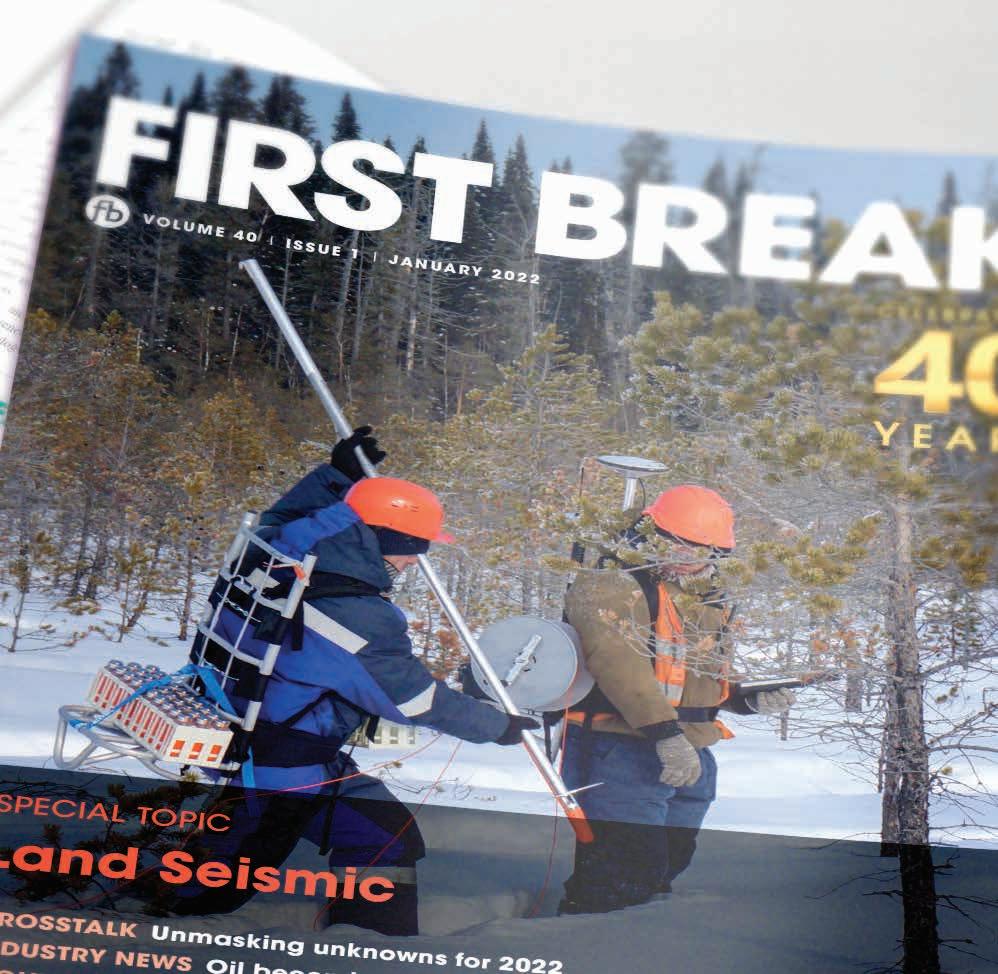

















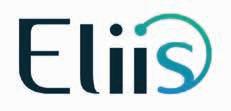










FIRST BREAK I VOLUME 41 I JANUARY 2023 15 EAGE NEWS We thank all our valued advertisers for their loyal support in 2022! PANTONE Re ex Blue C PANTONE 347 C
# 45-8 Group A Aarhus Geoinstruments • Aarhus Geosoftware • Advanced Geosciences Europe S.L. • AgileDD • Alcatel Submarine Networks • Allton • ALSEAMAR • Ambrogeo Instruments • Ampseis • Arianelogix • ARK CLS Ltd • Atlas Fluid Controls • Avalon Sciences Ltd B Beicip-Franlab • BGP Inc C Cegal AS • CGG Services SAS • CoCoLink Corp • Cognite • Colchis Petro Consulting (Beijing) Ltd. • CVA Europe Holding D Delft Inversion • DownUnder GeoSolutions (London)Pty Ltd • Dynamic Graphics Ltd E Earth Science Analytics • EIF Geosolutions • EIWT • Eliis SAS • Elsevier B.V. • EMergo srl • Emerson • EMGS ASA • Engenius Software • EOST Strasbourg • EPI Ltd • ET Works AS • ETAP-Entreprise Tunisienne d’Activités
Pétrolières • EURL Martin Neumaier F FEBUS OPTICS • FEI SAS as part of Thermo Fisher • Fraunhofer IWES • Fugro G GEM
Systems Advanced Magnometers • Geo Ex Machina • GEO ExPro GeoPublishing Ltd • GEO Resources Consultancy
International • GEODEVICE • Geofizika d.o.o. • Geofizyka Torun S.A. • Geolitix Technologies Inc • Geometrics Inc. • Geomind AS • Geomodeling Technology Corp. • Geopartner Geofizyka sp. z o.o. • Geophysical Insights • Geophysical Technology Inc • GeoSoftware • Geospace Technologies Corp. • Geotec SpA • Geoteric • GeoTomo LLC • Geotomographie GmbH • Geovista Ltd • Getech H Halliburton Landmark • HGS Products B.V. I I-GIS A/S • Ikon Science Ltd • ImpulseRadar Sweden
AB • InApril AS • INOVA Geophysical • INOVA Geophysical, Inc. • INT Inc. • ION • Iraya Energies Sdn.Bhd • IRIS Instruments
K Kappa Offshore Solutions • Katalyst Data Management • King Abdullah University of Science and Technology • Kontur
L Leobersdorfer Maschinenfabrik GmbH • Loupe Geophysics Pty Ltd M Marac Enterprises Inc. • MIND Technology, Inc N National Oil Distribution Company AGIL S.A • NIS-Naftagas O Ocean Floor Geophysics • OPENGOSIM LTD •
OvationData Ltd. • OYO Corporation P PANATEC, S.L. • Perenco Tunisie Company Limited • Petroleum Experts Limited • Petrosys Europe Ltd • PetroTrace Limited • PGS Exploration (UK) Ltd. • PXgeo Q Qeye R RadExPro Europe • Repsol Exploracion SA • Resoptima AS • Rock Flow Dynamics • ROGII Inc • RoQC Data Management • Royal Society Publishing • RPS Energy S S&P Global Commodity Insights • SAExploration • Saudi Geophysical Consulting Office • Seamap UK Limited • Searcher Seismic • Seequent • Seismic Image Processing Ltd • Seismic Source Company • SEISQUARE Holding
SA • SENSYS - Sensorik & Systemtechnologie GmbH • Sercel • Sharp Reflections AS • Sharp Reflections GmbH • Shearwater
Geoservices Limited • SkyTEM Surveys ApS • SLB • SmartSolo Inc. • Soildata sp. z o.o. • Sound QI Solutions Ltd. • SPE
Netherlands Section • SPH Engineering • Spotlight • Stryde Limited • SYRLINKS T TDI-Brooks International Inc. • Teledyne
Marine • TERRASYS Geophysics GmbH & Co. KG • Theia Energy • TotalEnergies S.E. • Troika International Ltd • Tunisian Drilling Company (Compagnie Tunisienne de Forage) U Ulmatec Baro AS V Verif-i Limited • VSProwess Ltd W Weihai Sunfull
Geophysical Exploration Equipment X Xcalibur Geophysics Spain S.L • Xcalibur MPH Spain SL
16 FIRST BREAK I VOLUME 41 I JANUARY 2023 EAGE NEWS
We would like to thank our exhibitors for their generous support to EAGE in 2022!
Personal Record Interview
A life of farming and geoscience sustained

Farm boy to geoscientist?
I went to a one-room school-house in the country for my first six grades. By grade 7, I knew I wanted to be a scientist. By high school I had the whole class (eight of us) taking physics. Come engineering at University of Saskatchewan, I was the only geophysical engineer in the class. I guess you could say I was ‘driven’ by picking rocks on the farm.
Oil biz to academic: what happened?
Being at the right place at the right time is my best answer. I had just finished my doctorate degree at Colorado School of Mines intending to rejoin Amoco in Calgary. The Geophysics Department head sat in on my defence. At the end he offered me a job as they urgently needed someone to teach seismic exploration. The Canadian government meanwhile had introduced the National Energy Bill requiring all foreign companies to have 50% Canadian ownership. So no job at Amoco anymore. One door closed and another door opened.
What drives your research?
The goal to work alongside industry drove me to form the Reservoir Characterization Project (RCP). The project is still in existence after thirty-some years thanks to industry colleagues, mentors, and foremost some very bright and talented students who are now industry and academic leaders. Why RCP? Simply the recovery factor of our oil and gas reservoirs is low and the best place to find ‘new’ oil and
gas is in existing reservoirs with new ideas and new technologies.
What are you most proud of?
The students. The project was designed to be student-driven, focused on making an impact using new multi-component 3D and 4D technologies. Together with industry we conducted the first seismic surveys in the world over old fields and found new reserves. The industry made proposals to us which was previously unheard of. Students came from all over the world and well over a couple of hundred have graduated from the programme with advanced degrees.
Consulting assignment highlights?



I have had the opportunity to teach short courses to industry around the world. The courses and consultancy assignments were encouraged by CSM because of its close relationship with industry and the potential to attract students. I also got an insight into the needs of the industry which might impact the future direction of our profession. I have travelled to over 90 countries, embraced new cultures and most of all the people. It is a small world.
What about the next generation of geoscientists?
The sky is the limit. New exploration frontiers reside on our planet and beyond. We need to inspire the next generation to engage in new avenues of exploration. Education is still the foundation for inspiration. That means providing future generations
the opportunity to engage in science and engineering at a young age and encourage them to take on the challenges of tomorrow.
You kept the farm going?
Farming has changed. It is still the most noble profession in the world and will continue to be. It teaches you to be innovative and most of all humble. To keep a farm going you need family, friends and a respect for the land. Hard work never killed anyone, but after a hard day’s work it provides solitude and satisfaction of a job well done. Farming can teach you a lot about yourself and how to live life to the fullest. I have learned to accept that ‘living off the land’ is a give-and-take proposition. What you take has a lot to do with what you give back to the land.
You’re an oil mogul?
If by a mogul you mean, have I gotten my hands dirty? The answer is yes, in finding oil throughout the world and on my farm. Oil is still the life blood of our industry and farming. As an old farmer once put it – ‘It enables me to keep on farming one more year.’
Still on the curling rink and ice hockey?
What is a Canadian farm boy in Saskatchewan going to do in the winter time except shovel off the dugout and get the skates on? Winter sports have a calling that is hard to resist when you are a young boy or an old guy looking for the fountain of youth. Just remember that when you fall or get knocked down ‘get back up and keep going’.
FIRST BREAK I VOLUME 41 I JANUARY 2023 17 PERSONAL RECORD INTERVIEW
Tom Davis is the Canadian farm boy who became emeritus professor of geophysics at the Colorado School of Mines. He co-founded and headed the Reservoir Characterisation Project from 1983-2016. These days he consults and continues his lifelong commitment to farming, curling and ice hockey.
Tom Davis
Make sure you’re in the know EAGE MONTHLY UPDATE


























































2023 will be another exciting year with EAGE. We‘ve selected a few highlights about what to expect this year. More to follow, keep an eye on us.

FIRST BREAK I VOLUME 41 I JANUARY 2023 18 15-17 Feb Fifth Naturally Fractured Reservoirs Workshop Aix-enProvence, France 20-22 Mar Third EAGE Digitalization Conference & Exhibition London, UK 3-7 Sep Near Surface Geoscience
& Exhibition 2023 Edinburgh, UK 10-15 Sep 31st International Meeting
Montpellier, France 18-20 Sep Second EAGE Seabed Seismic Workshop Lake Como, Italy 27-30 Nov Fifth EAGE Conference on Petroleum Geostatistics Porto, Portugal
4th EAGE Global Energy
Conference & Exhibition Paris, France
Symposium
Utilisation
The Hague,
Conference
on Organic Geochemistry
Fall
Transition
Fall 22nd European
on Innovative and Optimised Resource
(IOR+)
Netherlands
AMERICAS 16-18 Aug First EAGE Conference on Offshore Brazil Equatorial Margin Rio de Janeiro, Brazil 31 Aug1 Sep First EAGE Workshop on Hydrogen & Carbon Capture Sequestration in LATAM Medellin, Colombia 20-22 Sep First EAGE Conference on Offshore Energy Resources in the South Atlantic Montevideo, Uruguay 19-20 Oct First EAGE Workshop on Water Footprint Bogota, Colombia 11-16 Nov Second EAGE Workshop on Geothermal in Latin America Guanacaste, Costa Rica 30 Nov1 Dec Third EAGE Workshop on Mineral Exploration in Latin America: ”The Role of Mining in the Energy Transition“ Santiago de Chile, Chile
EUROPE
MIDDLE EAST & AFRICA
SHOWCASE YOUR RESEARCH





AT THE LARGEST MULTIDISCIPLINARY GEOSCIENCE & ENGINEERING EVENT
!







DEADLINE: 15 JANUARY 2023

CONNECT WITH EAGE










































LOCAL CHAPTERS NEAR
ASIA PACIFIC





FIRST BREAK I VOLUME 41 I JANUARY 2023 19
1-3 Mar IPTC 2023 Bangkok, Thailand 6-9 Mar 5th Asia Pacific Meeting on Near Surface Geoscience & Engineering Taipei, Taiwan 15-16 Aug 2nd EAGE Workshop on Fluid Flow in Faults and Fracture Canberra, Australia 22-23 Aug EAGE Workshop on Unlocking Carbon Capture and Storage Potential Kuala Lumpur, Malaysia 12-13 Sep EAGE Conference on the Future of Energy - Role of Geoscience in the Energy Transition Kuala Lumpur, Malaysia 17-18 Oct EAGE Workshop on Data Science - From Fundamentals to Opportunities Kuala Lumpur, Malaysia 19-21 Feb MEOS-GEO Manama, Bahrain October Fifth EAGE Borehole Geology Workshop Dhahran, Saudi Arabia
Geosteering
Workshop Abu Dhabi, UAE
EAGE/AAPG Hydrocarbon Seals Workshop Dhahran, Saudi Arabia CHECK ALL EVENTS
November Fourth SPE/EAGE
and Well Placement
November
YOU
CROSSTALK

 BY ANDREW M c BARNET
BY ANDREW M c BARNET
What shall we call 2023?
What constitutes an ‘annus horribilis’ is a matter of perspective. From a global point of view, the last three years of political and economic turmoil against the backdrop of the Covid pandemic must surely qualify for the label. The fearful must wonder whether 2023 will add to the sequence.






We owe the popular use of the expression to the late Queen Elizabeth II. At a dinner to mark the 40th anniversary of her accession to the throne, held in the City of London Guildhall, she famously referred to 1992 (which was coming to an end) as her ‘annus horribilis’. In addition to a series of Royal Family scandals, a fire broke out at Windsor Castle. After her legendary speech that November, the year got even worse in December when the official separation of Prince Charles and Princess Diana was confirmed.
In her speech Her Majesty was gracious enough to acknowledge that the expression ‘annus horribilis’ came from one of her ‘more sympathetic correspondents’ (now known to have been a former assistant private secretary). It is a play on the Latin ‘annus mirabilis’, translatable as ‘wonderful year’ or ‘year of wonders’ and can be traced back to the title of a 1667 publication by the poet John Dryden. In it he celebrates how disasters in London in 1666 (plague, fire, war) were overcome, including some significant English military victories in their war against the Dutch.
First known reference of ‘mirabilis’ turning into ‘horribilis’ is said to date back to 1891. A Protestant periodical used the term to describe 1870, the year when papal infallibility was declared as dogma by the Roman Catholic church. More recently in 1985 a book review in the British newspaper The Guardian described the tumultuous year of 1968 as ‘annus mirabilis, annus horribilis’.
An extraordinary variety of significant unknowns will determine our global fate in 2023 and how good or bad it will be, much of it focused on energy supply and demand. Ironically, even embarrassingly, one of the more confident expectations is


that the geoscience community can look forward to steady if not improved business – it’s an ill wind that blows nobody any good.
Much of what happens will continue to be determined by the continuing turmoil created by Russia’s unfathomable determination to inflict maximum damage to Ukraine in the face of the country’s heroic resistance and international condemnation, these days including rebuke from previously non-committal governments such as China and India.

No media information can relate the true state of the actual conflict and thus a clue to any possible cessation of the violence and destruction. In one sense it will be tragic that the longer the hostilities continue, the more successful governments around the world will be in finding ways to combat the effect on energy resources as well as the general economic and social impact of sky-rocketing fuel prices, raging inflation and supply chain issues. The priority in Europe in the short term will simply be to get through the winter without too much hardship, some developing countries will fare worse even catastrophically.
Looking further ahead, the International Energy Agency paints a surprisingly optimistic picture headlining its World Energy Outlook 2022 published in October with the claim that global energy could be reaching a ‘historic turning point towards a cleaner more secure future’.
Alongside short-term measures to try to shield consumers from the impacts of the crisis, many governments are now taking longer-term steps. IEA says some are seeking to increase or diversify oil and gas supplies, and many are looking to accelerate structural changes. It cites measures worldwide including the US Inflation Reduction Act, the EU’s Fit for 55 package and REPowerEU, Japan’s Green Transformation (GX) programme, Korea’s aim to increase the share of nuclear and renewables in its energy mix, and ambitious clean energy targets in China and India.
IEA’s analysis is not all that rosy, however. It does predict coal use falls back within the next few years, natural gas demand

20 FIRST BREAK I VOLUME 41 I JANUARY 2023
BUSINESS • PEOPLE • TECHNOLOGY
‘Significant unknowns will determine our global fate in 2023.’
reaches a plateau by the end of the decade, and rising sales of electric vehicles (EVs) mean that oil demand levels off in the mid-2030s before ebbing slightly to mid-century. But the conclusion is not that great, i.e., total demand for fossil fuels declines steadily from the mid-2020s to 2050 by an annual average roughly equivalent to the lifetime output of one large oil field. Furthermore, according to IEA in its Stated Policies Scenario (STEPS), the share of fossil fuels in the global energy mix falls from around 80% to just above 60% by 2050. Global CO2 emissions fall back slowly from a high point of 37 billion tonnes per year to 32 billion tonnes by 2050. It says ‘this would be associated with a rise of around 2.5°C in global average temperatures by 2100, far from enough to avoid severe climate change impacts.’ In other words, much more needs to be done.
In 2023, as noted by analysts such as Deloitte, the vexatious options posed by the energy trilemma of energy security, supply diversification, and low-carbon transition will once again head the conversation. One can do no better than crib from Westwood Global Energy Group’s November commentary Energy Transition Insights to get a clue as to where we are immediately headed. As we all know, higher commodity prices have reinvigorated the E&P business: to what extent is the question. Most pertinently Westwood asks what the supermajors (BP, Chevron, Exxon, Shell, and TotalEnergies) are going to do with their shovel loads of cash. They come up with some pretty interesting numbers.
When comparing the cash profiles for the first nine months of last year against this year, operating cash flow has increased by 70% and Capex has increased by over 25%. However, shareholder pay-outs have more than doubled at the same time. Westwood finds that the supermajors had a surplus of $65 billion in the first nine months of 2022 providing them with considerable scope to increase Capex, shareholder pay-outs and/or debt repayments. On current trends, the supermajors in aggregate could have zero net debt by the end of 2023 if cash continues to build-up on their balance sheets at current rates and governments go light on windfall taxes.
Westwood is sceptical about how far the big companies can pivot towards spending on energy transition because of limited sizeable investment opportunities. Key growth areas such as carbon capture and storage and hydrogen are still at a nascent stage of development, it states.
Meantime E&P spending forecasts are notoriously fickle. Traditionally, oil industry investment paralleled oil price so you would expect a torrent of new expenditure. OPEC+ seems to be in charge of keeping oil supply/price at a premium, partly facilitated by an under-performing US shale industry (although this could change rapidly). However, for numerous reasons, notably recession fears, the impact of China’s slowing economy on energy demand plus oil companies’ conflicting spending choices, the
value of the old price calculation has been dulled. Factor in too that 65% of remaining discovered oil and gas around the world is owned by national oil companies. They also discovered 41% of global added conventional resources since 2011 with that share rising since 2018, according to Wood Mackenzie.
Early announcements from companies such as Chevron, ExxonMobil, Petrobras and Ecopetrol indicate that some of the excess revenue generated from profitable 2022 operations will be allocated to bigger E&P budgets. Even so IOCs seem intent on maintaining capital discipline focusing on advantaged oil and infrastructure-led exploration (ILEX).
We can safely conclude that the geoscience service sector seems set to benefit. Likely newer targets for marine seismic surveys include the Guyana-Suriname basin, offshore Brazil, eastern Canada, offshore Namibia and South Africa, while offshore Norway, the UK and the Gulf of Mexico will continue to be revisited.
Anecdotally the price of surveys is creeping up, but so far not by leaps and bounds as the demand for towed-streamer surveys has yet to explode. If this market does take off, then marine seismic contractors could be scrambling for vessels in good shape and particularly for enough spare streamer capacity, a lot of which has been used up as replacements in the last few bleak years.
For now, ocean bottom nodes seismic continues to be where the action is as companies continue to exploit existing and nearfield possibilities to maintain or build their reserves. This same cautious strategy is reflected in something of a bonanza for the seismic processing sector as oil companies sift through existing data to locate hidden or overlooked oil and gas reserves. In fact ‘it’s all about the data’ is becoming something of a cliché in the business as oil companies embrace the digitalisation era of big data, cloud computing, machine learning, artificial intelligence, digital twins, etc, in the belief that this will introduce significant efficiencies and cost savings.
Typically when the marine seismic market hots up, investors, especially in Norway, look for the chance to participate. The number of players is now very restricted and the cost of entry probably prohibitive, but you never know. That said, the biggest contractor by far – Shearwater Geoservices – is privately held and therefore a potential IPO candidate should its Norwegian owners feel inclined.
Overall, the geoscience community does not look under threat of an annus horribilis in 2023. Oil and gas operations are in a recovery mode, for how long is unclear, and the renewables sector can only expand offering opportunities for geoscientists, albeit not as well remunerated. If there are glitches in the coming years, the need to recruit a new generation of geoscientists and engineers would be one. The other is the need for more research funding in geoscience, once reliably provided from the coffers of the oil industry.
FIRST BREAK I VOLUME 41 I JANUARY 2023 21 CROSSTALK
‘E&P spending forecasts are notoriously fickle.’
Views expressed in Crosstalk are solely those of the author, who can be contacted at andrew@andrewmcbarnet.com.
Designed to enable 100,000 + channels and data deliverables from highproductivity source techniques
SCALABLE ON TIME & LOW-COST



Access seismic equipment faster than ever before at a significantly reduced price point

EFFICIENT HIGH-DENSITY






Efficiently enhance seismic resolution and fast-track access to subsurface insights
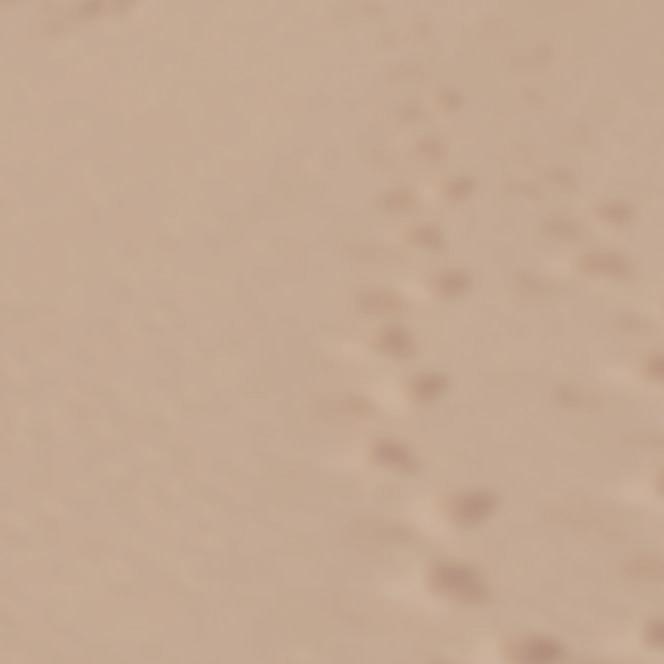



REDUCED HSE RISK
Reduce crew size, risk exposure hours, vehicles and logistics to minimise HSE risk

Transformlandseismic acquisitionwith




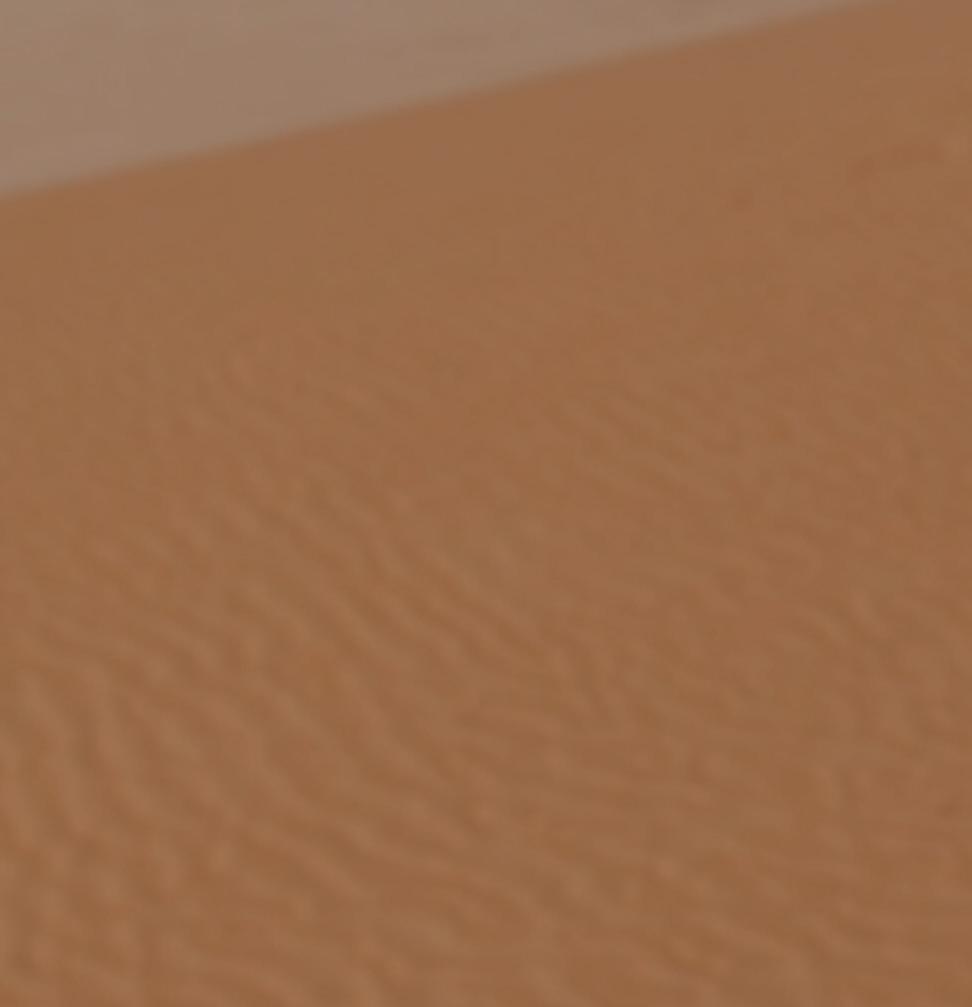
L e a d i n g t h e t r a n s i t i o n t o n o d a l a c q u i s i t i o n w i t h s y s t e m s d e s i g n e d t o s c a l e
First fully autonomous, semi-autonomous ocean bottom node moves closer
Blue Ocean Seismic Services has completed seismic trials of its fully autonomous, self-repositioning ocean bottom node underwater vehicles as it prepares to disrupt the seismic acquisition market in 2024.

Financially backed by bp Ventures, Woodside Energy and Blue Ocean Monitoring, the UK/Australian tech company, is developing the world’s first fleet of autonomous low-impact subsea nodes for capturing seismic data from the ocean floor for multiple applications such as offshore wind, oil and gas, and CCS.
‘These underwater vehicles will transform the offshore seismic sector to become more affordable, faster, safer, more environmentally friendly and significantly less carbon intensive,’ said Blue Ocean Seismic Services.

The company has undertaken substantial further passive and active testing in Plymouth on the UK south coast, the North Sea and Australia to confirm the performance of the command and control systems, underwater flight performance, seismic coupling and active seismic data acquisition.
In the recent North Sea active seismic trial, the company achieved its technology and data collection objectives, including: acquiring additional cycles of active seismic data with its alpha vehicles (AP-OBSrV) alongside conven-
tional ocean-bottom nodes (OBNs); and confirming the ability of the AP-OBSrV to maintain a close seismic coupling with the seabed, especially where cross currents exist.
With geophysical performance on track, the company will continue its rapid progression towards launch of commercial operations in 2024, starting with the assembly of up to 250 OBSrV version 1 nodes (based on the AP-OBSrV design) in batches, with pre-commercial trials in H2 2023.
Before commencing pre-commercial trials in H2 2023, the company is progressing discussions with industry partners and pre-qualifying for future tender opportunities. It also plans to open a new office in Houston, Texas, in Q1 2023.
Simon Illingworth, managing director and chief executive officer, Blue Ocean Seismic Services said: ‘We will continue with the operational scale up of the business, engaging with government regulators in our key initial markets and begin commercial operations in 2024. Substantial investment is also being made in securing components for our initial inventory of pre-commercial vehicles.
Blue Ocean Seismic Services has appointed Fabio Mancini as chief geophysicist. Mancini, who has played a significant role in developing the
technology, has joined from Woodside Energy where he was chief geophysicist from 2018. He spent five years at TotalEnergies in R&D and operations, working on projects covering both


seismic processing and acquisition. He subsequently moved to Hess, where he was in charge of Hess’s seismic activities for the eastern hemisphere. Mancini then moved to Australia to join Woodside.
‘As a leading figure in the subsea exploration sector, it is a huge endorsement to have someone of Fabio’s calibre join the business. He will bring considerable expertise and experience to the team as we move to the next phase of our development,’ added Illingworth.
Mancini said: ‘As one of the co-inventors I look forward to realising the vision of transforming seismic acquisition in the years ahead.’
FIRST BREAK I VOLUME 41 I JANUARY 2023 23 HIGHLIGHTS INDUSTRY NEWS
Deepwater
60% 25
31 US holds Pacific wind auction
exploration to rise
TGS and PGS team up in Brazil
24
TGS and PGS team up for 3D survey offshore Brazil
TGS and PGS have secured pre-funding for the Santos Sul multi-client 3D project in the southwest Santos Basin offshore Brazil.
The survey will cover more than 15,000 km2 of both open acreage made available by ANP via the new Permanent Offer (POR) mechanism and the exploration blocks recently awarded in the 17th
Concession bid round and third Cycle of the POR.
The vessel Ramform Tethys will mobilise for the survey in January 2023, and acquisition is scheduled to complete in August 2023.

‘This joint venture with PGS further strengthens our 3D data library and position in Brazil. The Santos Sul 3D
project will be instrumental in providing invaluable data and actionable insights into new and emerging plays outside the Pre-Salt, allowing our clients to de-risk their exploration activities in the region for active and future licensing rounds,’ said CEO of TGS, Kristian Johansen.
‘We experience continued exploration interest offshore Brazil where the combination of the Ramform-designed vessels and GeoStreamer technology is in strong demand. The Santos Sul multi-client survey expands PGS and TGS 3D data coverage in Brazil and will provide high quality data essential for the exploration of these newly awarded blocks. The PGS/TGS collaboration in this portion of the Santos basin also provides coverage over a wider area available through the permanent offer licensing round,’ said president and CEO of PGS, Rune Olav Pedersen.
CGG wins extension of seismic imaging contract
in Brunei
CGG has won a multi-year contract extension from Brunei Shell Petroleum Company (BSP) to continue operating a dedicated seismic imaging centre at its head office in Seria, Brunei.
Peter Whiting, EVP, Geoscience, CGG, said: ‘This renewal of our dedicated centre contract builds on six years of
technical excellence and demonstrates the trust BSP has in our imaging team and high-end technology.’
In the past six years, CGG has delivered land, marine, transition zone, OBC and high-density OBN seismic imaging results at the BSP centre. ‘The in-house team will continue to apply its propri-
Magseis Fairfield wins CCS monitoring contract in North Sea

Magseis Fairfield has secured a data acquisition contract for a CCS monitoring project in the North Sea using its ocean bottom node and source technology. Data acquisition will commence in Q4 2022, utilising the MASS III ocean bottom nodes and modular source technology.
Meanwhile, Magseis has signed an agreement with a repeat customer for a
4D OBN project in the North Sea with options for additional work. The project is scheduled to start in Q2 2023, with an expected duration of approx. one month, using Z700 technology.
Finally, TGS’ has acquired all outstanding stock units of Magseis Fairfield at a price of 8.08 NOK per share ($0.81) to complete its takeover.
etary technologies, such as Time-lag FWI, Q-FWI, least-squares migration and shallow imaging, to address the specific regional challenges posed by the presence of widely distributed shallow gas clouds, channels, gas-charged silts, and complex fault structures around the discovered fields,’ said CGG.
24 FIRST BREAK I VOLUME 41 I JANUARY 2023 INDUSTRY NEWS
Ramform Tethys is mobilising for the survey this month.
MASS III ocean bottom nodes are being deployed.
Deepwater exploration set to grow more than 60% by 2030, says Wood Mackenzie
Land Seismic Noise Specialists

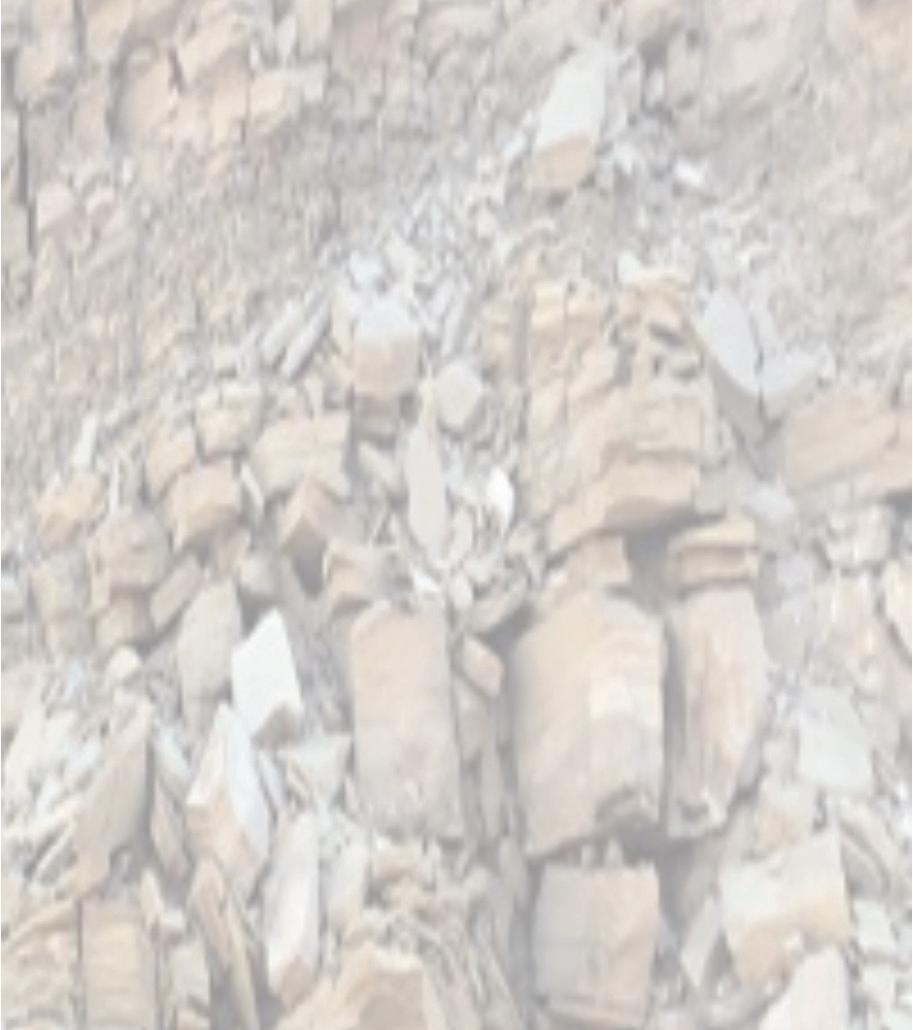

Deepwater is the fastest-growing upstream oil and gas resource, according to research from Wood Mackenzie.
From just 300,000 barrels of oil equivalent per day (boe/d) in 1990, production is expected to hit 10.4 million boe/d in 2022. By the end of the decade, that figure should pass 17 million boe/d.
Deepwater production is set to increase by more than 60% between 2022 and 2030, growing from 6% to 8% of overall upstream production. Ultra-deepwater production from depths of 1500 m and above is growing fastest. By 2024 it will account for more than half of all deepwater production (defined as 400 m of water depth or above).

Brazil remains the leading deepwater producer, accountling for around 30% of current global capacity and will continue to grow. Guyana, the most significant new entrant, will be producing one million boe/d within the next five years. In total, 14 other countries will contribute to the deepwater supply mix in the coming years.
Just eight companies account for 65% of deepwater production and 67% of the remaining project value.

Petrobras and the seven majors dominate deepwater production, operating 22 of the top 25 deepwater assets. Petrobras’ deepwater portfolio is around twice as big as its nearest peer, Shell, which stands out among the majors for leading production and cash flow. ExxonMobil and TotalEnergies show the highest rates of growth this decade.
‘Typically, only the best subsurface plays become commercial in water this deep. Deepwater basins therefore tend to be hyper productive, recovering huge vol-


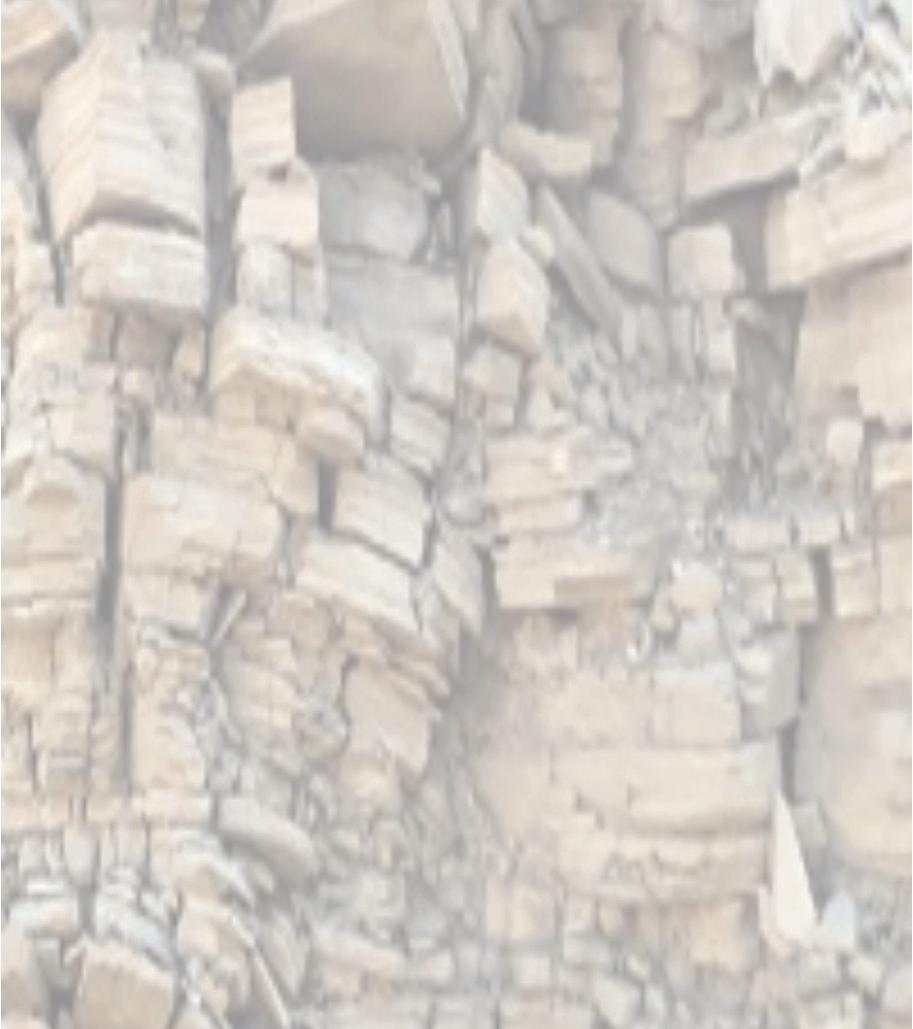
umes of oil and gas from each well. This translates into high economic returns and low Scope 1 and 2 emissions intensities relative to most other oil and gas resource themes,’ said Wood Mackenzie.
‘But there is still room for emissions improvement. The energy majors are focused on cutting deepwater emissions by reducing flaring and methane leaks, optimising operations at existing platforms and, where possible, facility electrification.’
There is a robust pre-FID project pipeline, offering plenty of investment opportunities across a range of jurisdictions, says the report. Average investment returns in Wood Mackenzie’s global database of deepwater development projects are 24%, at $60/bbl Brent, but the bookends are far apart. The best returns are generated by smaller oil fields which can be tied back to nearby infrastructure. The lowest are long lead-time gas supply projects.
Service companies have made huge fleet reductions for key equipment such as floating rigs and productions systems since the peaks of the 2010s. With activity levels growing, equipment and services availability will be a constraint, said Wood Mackenzie.
Cost inflation will continue to risk project economics. In some regions deepwater rig costs have doubled compared to 2021 day rates. It has hit global hotspots such as the US GoM and Brazil hardest. Gato do Mato in the Brazilian pre-salt for example, will be delayed by up to two years due to rising costs.
Constraints in the global deepwater supply chain will, with time, increase lead times and unit costs across the board.
FIRST BREAK I VOLUME 41 I JANUARY 2023 25 INDUSTRY NEWS Our Full-Wave Correction (FWCTM) Technology Can Address Surface Scattering and Improve Your Challenging Seismic Data N��� ���������� �������
PGS releases 3D Nigeria shale data
Shale Formation. The eastern part of the dataset is in the transitional detachment fold zone and contains subtle faulting along with low wavelength folding of Eocene to Quaternary stratigraphy. The west of the survey, situated in the outer fold and thrust belt, is dominated by closely spaced thrust faults.
The Niger Delta Basin, formed during the Late Cretaceous period, contains up to 12 km of Late Cretaceous to Quaternary-aged clastics deposited in an upward-coarsening regressive deltaic sequence. The main source rocks are Akata Formation marine shales and Lower Agbada Formation paralic shales.
PGS has released its Nigeria MegaSurveyPlus providing 11,230 km2 of 3D data giving a thorough AVO analysis of structural provinces directly linked to the Akata Shale Formation.
PGS’ Nigeria multi-client data library has been revitalised with reprocessing of 3D data from field tapes, said the company. Modern techniques such as optimised denoising algorithms and a complete deghosting sequence have improved data bandwidth and signalto-noise ratio. A multiple attenuation process has enhanced image integrity
by eliminating complex multiples, PGS added.
The scale of the MegaSurveyPlus 3D project gives an expanded and consistent regional geological perspective. The resulting full-stack PSTM data can be used for regional interpretation, giving a greater understanding of plays and migration pathways across open acreage, said PGS. Pre-stack PSTM products allow a thorough AVO analysis, it added.
The reprocessing covers two main structural provinces directly linked to the gravity-driven movement of the Akata
Proven reservoirs in the basin lie in unconsolidated sandstones of the Agbada Formation deposited as stacked turbidite channel-and-fan complexes (Tuttle et al., 1999). The most significant accumulations are trapped in roll-over anticlines in the hanging walls of growth faults, but hydrocarbons may also be found in fault closures and subtle stratigraphic traps.
‘Reprocessing has enhanced imaging of targets with improved illumination of complex structures associated with the diapiric movement of the Akata Shale Formation,’ said Avril Burrell.
Ikon Science launches RokDoc update
Ikon Science has released RokDoc Version 2022.4 geoprediction software, which introduces new functionality and automation of QC and knowledge generation workflows.
As global energy demand continues to grow and drilling activities increase to meet the challenge, the quantitative analysis workflow used to characterise reservoirs has been significantly improved by adding several user enhancements to streamline and speed-up results. In RokDoc 2022.4 capabilities of the advanced Multi-Well Wavelet toolkit have been expanded to include Parametric Constant Phase wavelet estimation techniques, optimal for broadband seismic and to obtain
more stable seismic wavelets.

Additionally, Ikon has released the Rock Physics Machine Learning (RPML) tool, a technical collaboration with Australia’s national science agency, CSIRO, as an addition to our already powerful Deep QI module. This functionality will greatly increase performance and flexibility in rock physics, petrophysics and data-trend workflows.
‘RokDoc focuses on refined functionality and time savings for streamlined workflows as well as new machine learning techniques for optimised results,’ said Alan Mur, product manager for QI applications, Ikon Science. ‘Our new machine learning tool captures the integrated team’s knowledge and brings physics to
automated prediction workflows, making successful decision-making easier than ever.’
Other notable enhancements included thickness calculation tool using property cut offs in 1D, 2D and 3D data sets; improved offset to angle seismic stack conversion; save and Load options in the Normal Compaction Trend module as well as better handling of working intervals; user experience enhancements including gather tracks settings, spectra plots updates, interpretation and visualisation of arbitrary lines, availability of calling mineral and fluid sets in the External Interface (Python libraries), and updated interfaces across 2D and 3D sessions.
26 FIRST BREAK I VOLUME 41 I JANUARY
INDUSTRY NEWS
2023
Improved imaging of complex structures related to shale diapirism shown on full-stack PSTM dip line.
CGG launches airborne mutli-physics survey in Arizona
CGG has launched a multi-client data project in southeast Arizona to acquire 270,000 line-km of airborne multi-physics data, including aeromagnetic, radiometric and airborne gravity data for the mining industry. Final products are scheduled for delivery through CGG’s proprietary GeoVerse platform.
Dechun Lin, EVP, Earth Data, CGG, said: ‘Our Southeast Arizona data project represents a significant step forward in our strategy to provide integrated data solutions for the mining industry and is an innovative and effective model to improve data access in critical mining regions.’
CGG’s subsurface experts and data scientists will integrate this data set with 50,000 km2 of satellite imagery, multi-spectral data from a broad spectrum of wells and geological data sources, to deliver ‘a single comprehensive, consistent and cross-disciplinary data set to support innovative methods of exploration’.
Upstream investment in Russia plummeted in 2022, says Rystad Energy
Russian upstream investments are set to decrease to $35 billion in 2022 as the financial impact of western sanctions and the exodus of foreign partners from the country’s oil and gas sector kick in, according to Rystad Energy.
Before Russia’s invasion of Ukraine in late February 2022, upstream investments in Russia were expected to approach $50 billion in 2022.
Investments in Russia’s upstream sector totalled $45 billion last year, rebounding from Covid-19-induced lows of $40 billion in 2020, but the stagnation in investments will lead to a drop in final investment decisions on projects. While domestic giants Gazprom and Rosneft will be able to keep spending around 2021 levels, there will be a significant drop in investments at other companies.
Several large liquefied natural gas (LNG) projects have been pushed back five years or more as western partners pull out. Before Russia invaded Ukraine, investments were anticipated to rise significantly as Gazprom had lined up the development of several large gas-condensate fields in the Yamal region and Novatek was actively involved in its Arctic LNG-2 project. Now, only some of these projects are likely to get off the ground before 2025.
‘The war in Ukraine has cost the Russian oil and gas sector dearly, with project investments taking a significant hit. This year looks set to be the start of a multi-year slump that will make the Covid
years pale in comparison,’ said Swapnil Babele, Rystad Energy senior analyst.
Greenfield investments are set to suffer the largest drop in spending due to the sudden sharp decline in approval activity this year. Investments in new Russian projects are projected to fall 40% from last year, tumbling from $13.7 billion to just $8 billion this year. Only around 2 billion barrels of oil equivalent of resources were sanctioned last year, with almost all those volumes coming from the Baltic LNG project at which Gazprom started construction in May 2021. In light of Russia’s invasion of Ukraine, however, financing the project will be a struggle for Gazprom. Service companies have already started leaving Russia, while Linde, which is providing its proprietary LNG technology for the project, has also exited the country. No significant new projects are expected to be sanctioned in Russia next year.
In comparison, brownfield investments are expected to drop by only 14% as oil production has not taken a significant hit. The impact of lower oil demand will be visible next year when brownfield investments will drop by approximately 20% compared to 2021. Rosneft and Lukoil will account for roughly 42% of the spending.
Russian gas giant Gazprom in October approved its updated investment plan for 2022, showing capital expenditure increasing by 22.5% to $28.6 billion. Rystad Energy estimates that about $10.4
billion of that spending will be funnelled into upstream operations, a marginal drop from the $11 billion spent on upstream investments in 2021. Most of these investments will go towards developing its enormous gas-condensate reserves in the Russian Far East and the Yamal Peninsula. Yamal is still positioned to be the next largest gas hub for the country in the coming years.
Gazprom is still developing major fields such as the Bovanenkovskoye group and Kharasaveyskoye and is building the infrastructure to connect the fields.
At Rosneft total investments rose 14% in the first half of 2022 compared to the same period last year, with upstream expenditure accounting for roughly 90% of total spending. The operator’s upstream spending is expected to total around $12.9 billion this year, similar to $13.1 billion in 2021. The Vostok Oil project will attract between 25% and 30% of the total upstream budget. Rosneft is carrying out extensive drilling activities in the area, appraising the deposits to confirm additional reserves. Excluding these costs, 2022 spending will come in at around $9.5 billion compared to $10.7 billion last year.
Russian independent Novatek had intended to boost its LNG output from 18.8 million tonnes per annum (Mtpa) to 40 Mtpa by 2027 with the launch of Arctic LNG-2 and Yamal LNG Train 4. However, this target is expected to take five to six years longer to achieve.
FIRST BREAK I VOLUME 41 I JANUARY 2023 27 INDUSTRY NEWS
ENERGY TRANSITION BRIEFS
Horisont Energi has signed a deal with E.ON to transport and store more than one million tonnes of E.ON’s CO2 emissions per year by 2030. Subject to a licensing award, Horisont Energi is aiming to start operating the Errai carbon capture and storage (CCS) project offshore Norway.
ExxonMobil has signed an agreement for Mitsubishi Heavy Industries to deploy its liquid amine CO2 capture technology as part of ExxonMobil’s end-to-end carbon capture and storage (CCS) solution for industrial customers.
Petronas has reached the final investment decision for the Kasawari CO2 sequestration project offshore Sarawak. The CCS project in Block SK316 about, 200 km off Bintulu, is expected to reduce carbon dioxide volume emitted via flaring by 3.3 MtCO2e annually, making it one of the largest offshore CCS projects in the world.
The engineering company Kent has won a contract from INEOS Energy for Project Greensand CCUS scheme in Denmark. Kent will conduct screening studies covering the whole CCS Value Chain.
Shell has reached agreement with Davidson Kempner Capital Management, Pioneer Point Partners and Sampension to acquire Nature Energy Biogas for nearly $2 billion. Based in Denmark, Nature Energy is a producer of Renewable Natural Gas (RNG) from agricultural, industrial, and household wastes.
Eni has launched the Bacton Thames Net Zero cooperation agreement to decarbonise industrial processes in the south-east of England and the Thames Estuary. The project will capture, transport, and store 6 million tonnes/ year growing up to 10 million tonnes/ year of carbon dioxide emitted from the Bacton, wider Thames Estuary and potentially north-west European regions into the Hewett depleted gas field, in the North Sea.
Targets for 2030 wind production from floating (rather than fixed) wind farms are set to be missed across the globe, according to 4C offshore’s Global Floating Wind report.
However, the report notes that, rather than being a supply issue, lack of progress is often down to administrative delays, with governments failing to follow up on their climate promises with clear policies and permitting and regulatory frameworks to kick-start floating offshore wind in their territories.
‘Compared with the previous report from May 2022, our forecasts to 2030 and 2035 have both been reduced by 2 GW,’ said Ivar Slengesol, vice-president of New Energy Solutions at TGS, 4C’s parent company ‘This decrease reflects continued policy delays and slow authorisation processes in multiple countries. Despite high ambitions from developers, with several companies having floating project pipelines greater than 10GW, development will slow without proper government support.’
A key message from the report is that, although the current trajectory points in the wrong direction, there is still time to regain some lost ground. With the potential for floating wind installation to begin within seven years of site award, we are now entering a crucial window of opportunity.
Richard Aukland, director of research at 4C Offshore, said: ‘We saw this with the fixed-bottom market a decade ago. Ambitions for floating wind deployment are rapidly increasing globally as governments become attuned to floating versus

fixed-bottom wind benefits. Aside from the issues of limited geographical suitability for fixed wind turbine installation, floating wind farms can be less visible from the shore, carry fewer environmental impacts, and access stronger wind resources. Competition and expectations remain high, but progress is too slow. Governments must shift their focus from the 2030-2040 time horizon to the here and now. 2023 must be a year of decision-making and action if commercial-scale projects are to hit the water this decade.’
The latest report estimates that 14 GW of floating wind power will be installed or in construction offshore by 2030. However, this represents only 5% of the total expected offshore wind installations and is less than the 54 GW targeted by the world’s energy regulators. Although countries like Japan, Norway, Portugal, and the UK were first out of the blocks, the US and SouthKorea appear to carry the greatest momentum. Both are expected to produce around 10 GW of energy from floating wind capacity by 2035, representing nearly half of the world’s total. China is also expected to commercialise quickly, with the first GW-scale project being commissioned before 2030.
‘Cost reduction is heavily dependent on economies of scale, and continued innovations are needed to bring costs into parity with fixed-bottom,’ says the report. ‘Therefore, the sooner we start installing large-scale floating wind farms, the sooner the world can benefit from their increased environmental benefits.’
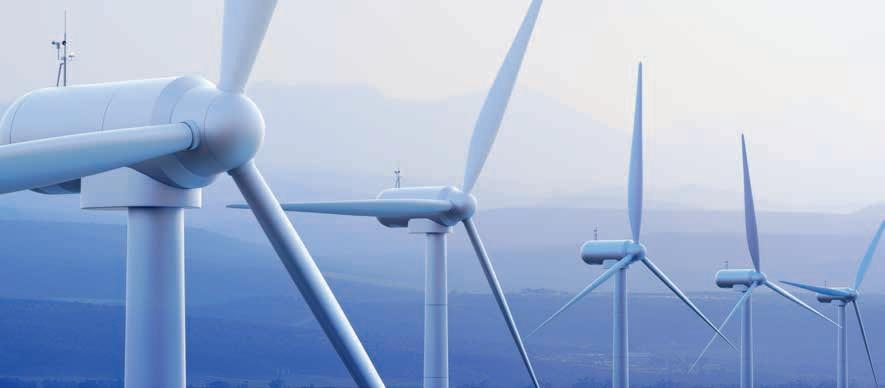
28 FIRST BREAK I VOLUME 41 I JANUARY 2023 INDUSTRY NEWS
Floating offshore wind targets will be missed, warns TGS
Some 14 GW of floating wind power will be built or under construction by 2030.
Nordic region to lead wind and green hydrogen energy revolution, says Rystad

The Nordic region is becoming a powerhouse in wind power, hydrogen electrolyser, nuclear power and carbon storage initiatives, says Rystad Energy.
Identifying Sweden, Finland and Denmark as leaders in the green revolution in onshore wind and solar PV generation, Rystad Energy expects capacity in these countries to grow from 30 gigawatts (GW) in 2022 to 74 GW by 2030.
Almost 40 green hydrogen projects are poised to start up in the region by 2030 or earlier, giving Denmark, Sweden and Finland a combined 18% of Europe’s electrolyser capacity for green hydrogen production. This, combined with Denmark’s potential to store carbon in the North Sea, will go a significant way towards helping Europe decarbonise heavy industries such as steel and cement.
‘The Nordics at present produce over 90% of their power (including nuclear) via renewables and are significant electricity exporters to the rest of Europe. That trend will intensify as geography, technology and managerial experience in the region will see renewable investment and generation increase,’ said Francesca Bjørnflaten, senior analyst, renewables at Rystad Energy.
Sweden’s power mix has historically been dominated by nuclear and hydropower. In recent years, onshore wind has grown strongly and is now the nation’s third-largest source of electricity. Sweden was the largest electricity exporter in Europe for the first three quarters of 2022, selling more than 20% of its total generation to neighbouring countries.
Onshore wind will be the dominant energy source in the three countries, accounting for 61.5 GW of the installed capacity with the remaining 12.8 GW to come from solar PV.
Sweden is set to install 30 GW of onshore wind by 2030, part of its plan of becoming a significant energy exporter. Long term, Sweden aims to source 65% of its generating capacity from renewables by 2030 compared to 23% presently, rising to 100% by 2040.
Finland is set to ramp up onshore wind capacity from 5 GW in 2022 to 20 GW by 2030, when it is aiming for 51% of its power generation to be renewables-based compared to 17% at present.
Denmark’s power mix already consists of mainly renewable energy (70%) and is now aiming for renewables to hold a 55% share of its overall energy consumption by 2030. Denmark will grow onshore wind capacity by 11.5 GW and solar PV by 9 GW up to 2030. Offshore wind capacity will rise from 2.3 GW presently to 8.8 GW by the end of this decade.
Denmark is now one of the five largest offshore wind markets in Europe, with further capacity additions likely in the coming decades in the North Sea and Baltic Sea. This year, the Danish government set a new target to deploy 12.9 GW of offshore wind capacity by 2030, a 4 GW increase from the previous mark. It follows Denmark’s pledge to contribute to the Esbjerg Declaration alongside Germany, the Netherlands and Belgium. This aims for 65 GW of offshore wind to be
installed by the four countries by 2030 and 150 GW by 2050.
While two energy islands in Denmark have been dedicated to offshore wind, islands dedicated to producing ‘green’ hydrogen could also become a reality. Denmark, Sweden and Finland have announced almost 40 separate green hydrogen projects with start-up scheduled for 2030 or earlier. The combined share of electrolyser capacity for green hydrogen production in the three countries will comprise about 18% of the European market by 2030 with Denmark (12% share in 2030) and Sweden (5% share in 2030).
Sweden is seeking to decarbonise its steel industry by replacing coal with renewable energy and green hydrogen to produce ‘green’ steel. The manufacturing process will use green hydrogen as a feedstock to directly reduce iron ore, creating ‘sponge iron’ as an intermediate product. According to Swedish steelmaker H2 Green Steel, it is possible to reduce CO2 emissions by 95% when producing green steel, compared with traditional, coal-based steel-making techniques.
Denmark has significant storage availability from onshore saline aquifers, but the country is also extremely well suited for CO2 storage within the North Sea. With easy access to the North Sea and the rest of mainland Europe, high storage volumes coupled with the high demand for CO2 storage in the surrounding areas, Denmark has great potential for becoming a main storage hub in Europe as the EU strives to meet its climate targets, said Rystad.
SLB helps Oman to develop geothermal energy


SLB is helping Oman build a national strategy to develop its geothermal resources

The company has evaluated data from more than 7000 oil, gas and water wells, with the objective of mapping sweet spots for geothermal prospects. SLB experts assessed surface, subsurface and well data from the national data repository over a three-month period.
In the initial phase, SLB’s GeothermEx multidisciplinary geothermal consulting team used a proprietary AI solution to expedite assessment, sorting, and evaluation of the huge volume of data from the Oman Oil and Gas Data Repository (OGDR). The next phase will include assessment of the economic feasibility of the development of potential geothermal resources.
FIRST BREAK I VOLUME 41 I JANUARY 2023 29 INDUSTRY NEWS
SLB is assessing projects all over Oman.
ExxonMobil and Chevron announce plans for big rise in spending on capital projects

ExxonMobil has outlined a big increase in investments over the next five years aimed at emission reductions. Its corporate plan maintains annual capital expenditures at $20-$25 billion, while growing lower-emissions investments by nearly 15% to approx. $17 billion.
than 70% of capital investments will be deployed in strategic developments in the US Permian Basin, Guyana, Brazil, and LNG projects around the world. By 2027, upstream production is expected to grow by 500,000 oil-equivalent barrels per day to 4.2 million oil-equivalent barrels per day with more than 50% of the total to come from these key growth areas. Approximately 90% of upstream investments that bring on new oil and gas production are expected to have returns greater than 10% at prices less than or equal to $35 per barrel, while also reducing upstream-operated greenhouse gas emissions intensity by 40-50% through 2030, compared to 2016 levels.
Near-term Upstream investments are projected to keep production at approximately 3.7 million barrels of oil equivalent per day in 2023 assuming a $60 per barrel Brent price, offsetting the impact of strategic portfolio divestments and the expropriation of Sakhalin-1 in Russia.
ambition. In the Permian, the company is on track with its goal to reach net-zero Scope 1 and 2 emissions from its operated unconventional assets by 2030.
‘Our 2030 emission-reduction plans are on track to achieve a 40-50% reduction in upstream greenhouse gas intensity, compared to 2016 levels,’ added Woods. ‘At the same time, we’ll continue to work to provide solutions that can help customers in other industries reduce their greenhouse gas emissions, especially in higher-emitting sectors of the economy like manufacturing, transportation and power generation.’
Meanwhile, Chevron has announced 2023 organic capital expenditure budgets of $14 billion and $3 billion for equity affiliates.
Investments in 2023 are expected to be in the range of $23 billion to $25 billion to help increase supply to meet global demand. The company also remains on track to deliver a total of approximately $9 billion in structural cost reductions by year-end 2023 versus 2019.
Upstream earnings potential is expected to double by 2027 versus 2019, resulting from investments in high-return, low-cost-of-supply projects. More
ExxonMobil has allocated approximately $17 billion on its own emission reductions through to 2027, an increase of nearly 15%. Nearly 40% of these investments are on the lower-emissions business with a primary emphasis on large-scale carbon capture and storage, biofuels, and hydrogen. The balance of the capital will be deployed in support of the company’s 2030 emission-reduction plans and its 2050 Scope 1 and 2 net-zero
The company’s 2023 capex budget is up more than 25% from 2022 expected spend, excluding acquisitions. Affiliate capex in 2023 is down modestly from 2022 expected spend. These budgets include $2 billion in lower carbon capex, more than double the 2022 budget.
‘We’re maintaining capital discipline while investing to grow both traditional and new energy supplies,’ said Chevron Chairman and CEO Mike Wirth.
Chevron’s 2023 capex budget assumes cost inflation that averages in the mid-single digits with certain areas higher, such as the Permian Basin that assumes low double-digit cost inflation.
TGS launches 3D land survey in Texas
TGS has launched the Beyond Far East 3D onshore seismic survey in the Midland Basin in Mitchell County, Texas, US.

This 150 km2 area of the Midland Basin includes historic production from the Clear Fork, Strawn, Sprayberry, and Upper Wolfcamp intervals. The survey will evaluate and develop the multiple zone potential, including the emerging Wolfcamp D, which presents itself on the eastern edge of the Midland Basin.
Data acquisition is expected to begin in Q1 2023, with final data available to clients in early Q3 2023. Beyond Far East 3D is complemented by TGS’ extensive geologic products database with interpretive products and data from more than ~250,000 wells in the Midland Basin.
David Hajovsky, executive vice-president, Western Hemisphere at TGS, said, ‘The data will be processed by TGS utlising its land imaging technology.’
30 FIRST BREAK I VOLUME 41 I JANUARY 2023 INDUSTRY NEWS
ExxonMobil rig in Golf of Mexico.
US claims first Pacific offshore wind auction is a big success, raising $750 million
running along the Pacific seaboard drops down swiftly to 1000 m or more.
With a bid of $130 million for 80.062 acres in the Pacific Ocean, Equinor secured a ~2-gigawatt (GW) lease in the Morro Bay area, which will add to Equinor’s existing US portfolio of the Empire Wind and Beacon Wind projects on the US Northeast coast.
The US Bureau of Ocean Energy Management’s wind energy auction for five leases offshore California has raised $757 million, exceeding the two lease sales that were held earlier this year
The first ever lease sale for the Pacific region drew competitive high bids from five companies. RWE won OCS-PO561 for $158 million; California North Offshore Wind Floating won OCS-PO562 for $174 million; Equinor won OCS-PO563 for $130 million; Central California Offshore Wind won OCS-O564 for $150 million; and Inevnergy California Offshore won OCS-PO565 for $145 million.
BOEM’s lease sale offered five lease areas covering 373,268 total acres off central and northern California. The leased areas have the potential to produce over 4.6 gigawatts of offshore wind energy, enough to power over 1.5 million homes.

The Biden administration has set an offshore wind target of 30 GW by 2030 and 15 GW by 2035 in floating offshore wind capacity. California has set an offshore wind target of up to 5 GW by 2030 and 25 GW floating offshore wind by 2045. About two-thirds of America’s offshore wind energy potential is in deep waters. The narrow outer continental shelf
‘The US West Coast is one of the most attractive growth regions for floating offshore wind in the world due to its favourable wind conditions and proximity to markets that need reliable, clean energy. The US is a key market for Equinor’s offshore wind activities and one where we aspire to be a leader in growing this new energy industry,’ said Molly Morris, president of Equinor Wind US.
‘It adds at least another potential 2 GW to our existing 3.3 GW US offshore wind portfolio. We were among the first movers into US offshore wind and are now one of the first movers into California, a market we believe will become a strategic floating market globally. We now have the scale needed to optimize value across our US and Asia-Pacific portfolio,’ said Pål Eitrheim, executive vice-president of Renewables in Equinor.
PGS wins contract for 3D seismic survey in the Mediterranean

GS has won a 3D exploration acquisition contract in the Mediterranean from an independent energy company. The vessel Ramform Hyperion was expected to commence acquisition in late November and to complete mid-January 2023.
‘We continue to experience increased exploration activity in this prolific region. We currently have the Ramform Hyperion working in the southeast part of the Mediterranean and this contract secures visibility for the vessel into next year,’ said PGS President and CEO Rune Olav Pedersen.
Meanwhile, PGS, in collaboration with EGAS, has completed an exten-
sive 3D GeoStreamer data acquisition and imaging campaign in Egypt’s west Mediterranean Sea.
Its post-stack depth-merge comprises more than 24,000 km2 of data that have been merged into a single
full-stack depth seismic volume (KPSDM) in time and depth, migrating velocity model depth. The data package includes two pre-existing reprocessed overlapping MC3D surveys (legacy 3D data).
FIRST BREAK I VOLUME 41 I JANUARY 2023 31 INDUSTRY NEWS
Ramform Hyperion is expected to complete the survey in mid-January.
The windfarms will produce enough energy to power 1.5 million homes.
Shearwater appoints former Lundin MD to its board ahead of IPO
Shearwater GeoServices has appointed Kristin Færøvik as a director ahead of the company’s planned initial public offering and listing in 2023.
Most recently, Færøvik was managing director of Lundin Energy Norway. She is currently the chair of the board at Moreld, as well as a board member at Sval Energi and Bunker Holding. Previously, she has held executive positions at Rosenberg Wor-

leyParsons, Marathon Oil and BP Norway.
‘Kristin holds a strong track record as a leader from both production and service companies in the energy sector. Her extensive industry experience and network will further strengthen the board as we experience growing demand for marine seismic and prepare for a potential public listing of the company,’ said Robert Hobbs, chairman of the board at Shearwater.
Oil and gas round up
Neptune Energy has discovered oil at the Calypso exploration well (PL938) in the Norwegian Sea. Preliminary estimates are between 1-3.5 million standard cubic metres (MSm3) of recoverable oil equivalents, corresponding to 6-22 million barrels of oil equivalent (boe). Calypso is Neptune Energy’s third discovery in six months on the Norwegian Continental Shelf. Calypso is located 14 km north-west of the Draugen field and 22 km north-east of the Njord A platform. Well 6407/88S was drilled to a vertical depth of 3496 m and encountered an estimated 8-m thick gas column and 30-m thick oil column in a 131-m thick Garn Formation sandstone reservoir, of good to very good quality. Project partners are: Neptune Energy (operator, 30%), OKEA (30%), Pandion Energy (20%) and Vår Energi (20%)

Equinor has won consent for exploration drilling in Block 34/6 in the North Sea. Well 34/6-6 S / 34/6-6 A will be drilled to test a prospect named Angulata Brent in production licence PL 554. Water depth is 374 m. Equinor has also won consent for exploration drilling in Block 35/10 in the North Sea. Well 35/10-9 will be drilled to test the Heisenberg prospect in production licence PL 827 S. Water depth is 368 m.
Petronas has made an oil and gas discovery at the Nahara-1 well in Block SK306 in the shallow waters of Balingian Province about 150 km from Bintulu, off the coast of Sarawak, offshore Malaysia. The Nahara-1 well was drilled to a total depth of 2468 m and encountered hydrocarbons in the Late Oligocene to Middle Miocene-aged sedimentary sequences. Light oil with minimal contaminants was also established after production testing.
Wintershall Dea (50%, operator), Petoro (30%) and Sval Energi (20%) have submitted a plan for development and operation (PUD) for the second phase of the Maria field in the Norwegian Sea. The $380 million investment includes six well slots and takes advantage of existing infrastructure at Haltenbanken. Phase 2 is expected to add around 22 million barrels of oil equivalent. The Maria field is located around 200 km off the coast of Norway and was originally put into operation in 2017.
bp has been been awarded two blocks in the Mediterranean Sea, offshore Egypt by the Egyptian Natural Gas Holding Company. The Northwest Abu Qir Offshore Area – in which bp holds 82.75% and Wintershall-Dea holds 17.25% – is located west of the recently awarded North King Mariout block (bp 100%) and north of the Raven field. It covers an area of approximately 1038 km2 in water depths ranging between 600 m and 1600 m. The Bellatrix-Seti East block – in which bp and Eni, the operator, each hold a 50% share –is located west of the Atoll field and North Tabya blocks. It covers an area of 3440 km2 in water depths ranging between 100 m and 1200 m.
Sinopec has made a big discovery in the Sichuan basin at the Qijiang shale gas field. The Qijiang shale gas field is the first shale gas field discovered in medium-deep and deep strata in a complex tectonic zone on the margin of the basin. The depth of Qijiang’s shale formations ranges from 1900 to 4500 m, with the majority being deep shale.
Norway will not issue licences for energy companies to explore for oil and gas in frontier areas during the life of the current parliament, which ends in 2025, its oil and energy minister told Reuters.
32 FIRST BREAK I VOLUME 41 I JANUARY 2023 INDUSTRY NEWS
Kristin Færøvik.
Special Topic LAND SEISMIC
Land seismic systems are continuing to develop to facilitate ever more channels, more hard-wearing and smaller nodes along with more cableless systems that ensure efficient acquisition can take place in all terrains, in challenging weather and with little downtime.
lnnovations in the field, from improvements in vibroseis techniques to increases in trace density, are leading to better quality images. With many countries facing a short-term energy deficit, data is being used to improve recovery of existing fields.
Christof Stork proposes using the concept of ‘noise corrected OVT fold’ to aid the acquisition design process and provide quantitative means to reduce risk and optimise costs and quality with irregular acquisition.
Tom Davis introduces a new monitoring technology that could lead to the next generation of hydraulic fracture optimization in shale reservoirs.
S. L. Rowse et al present alternative methods of acquisition that can improve both productivity and S/N by utilising land impulse sources.
Mohammed Soyeb Allam et al present a new drilling campaign, which targeted high-angle infill wells with inclinations ranging from 60 to 70 degrees and led to greater production.
Jason Criss presents latest innovations with vibroseis to reach the goal of increased resolution in all acquisition environments.
Andrea Crook et al present results from a 2D field trial conducted in the Canadian Oil Sands that compared a small, near-surface explosive source with a conventional LIS explosive source.
Tim Dean et al show how the weather-related risk for seismic surveys in the Bowen Basin, Queensland, Australia, can be quantified using historical weather data.

Submit an article
First Break Special Topics are covered by a mix of original articles dealing with case studies and the latest technology. Contributions to a Special Topic in First Break can be sent directly to the editorial office (firstbreak@eage.org). Submissions will be considered for publication by the editor.
It is also possible to submit a Technical Article to First Break. Technical Articles are subject to a peer review process and should be submitted via EAGE’s ScholarOne website: http://mc.manuscriptcentral.com/fb
You can find the First Break author guidelines online at www.firstbreak.org/guidelines.
Special Topic overview
January Land Seismic
February Digitalization / Machine Learning
March Reservoir Monitoring
April Unconventionals and Passive Seismic
May Global Exploration Hotspots
June Securing a Sustainable Future Together
July Modelling / Interpretation
August Near Surface Geo & Mining
September Reservoir Engineering & Geoscience
October Energy Transition
November Marine Acquisition
December Data Management and Processing
More Special Topics may be added during the course of the year.
44 FIRST BREAK I VOLUME 41 I JANUARY 2023
World's First Smar t Seismic Sensor

























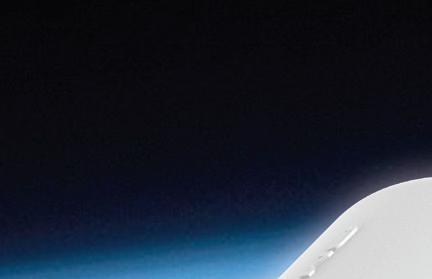





IGU-16
Built-in high-sensitivity DT-SOLO single-component geophone (5/10Hz) . IGU-16 is simple, convenient, reliable and very cost-effective. Provide customers with accurate 3W data (WHEN, WHERE, WAVE).

Application: Oil & Gas, Geothermal and Mining exploration







IGU-16HR IES
Built-In DT-Solo High-Sensitivity Sensor 5Hz & 10Hz External Sensor Option; Geophone & Marsh Strings, Hydrophone;Support for Bluetooth QC and Find Function
Application: Oil and gas exploration,Tunnel Geological Prediction



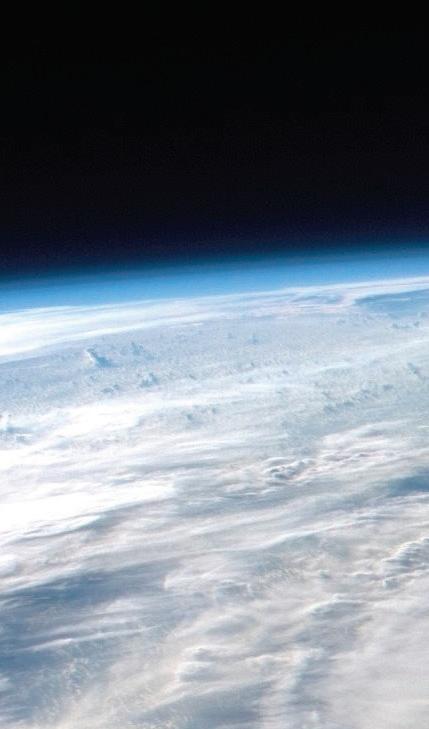
International Sales
Unit 145, 3901-54 Ave, NE

Calgary,AB T3J 3W5 Canada

Tel+1-403-2641070


Toll Free:+1-888-604 SOLO(7656)
Makes Cost-effective High Density Seismic Possible www.SmartSolo.com





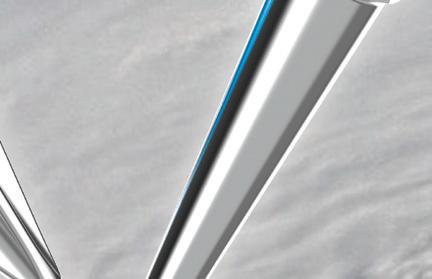
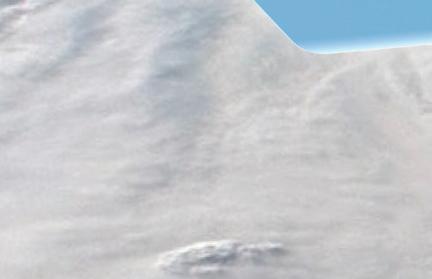

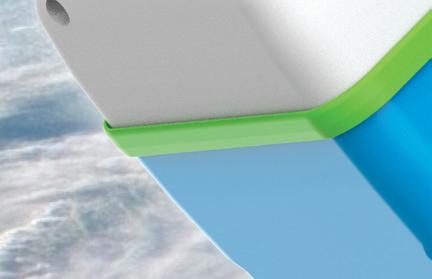





Email: sales@smartsolo.com














































































HOW TO SECURE YOUR NODAL ACQUISITION? www.sercel.com ANYWHERE. ANYTIME. EVERYTIME. Nantes, France sales.nantes@sercel.com Houston, USA sales.houston@sercel.com NG IS THE ANSWER! Wi
CALENDAR OF EVENTS
5-8 JUNE 2023
84th
Vienna, Austria www.eageannual.org
February 2023
15-17 Feb Fifth EAGE Naturally Fractured Reservoirs Workshop www.eage.org Aix-en-Provence France
19-21 Feb Middle East Oil, Gas and Geosciences Show 2023 www.meos-expo.com Manama Bahrain
21-23 Feb 2 nd AAPG/EAGE Papua New Guinea Petroleum Conference & Exhibition www.eage.org
March 2023
1-3 Mar International Petroleum Technology Conference (IPTC) 2023 2023.iptcnet.org
6-9 Mar 5 th Asia Pacific Meeting on Near Surface Geoscience & Engineering www.eage.org
20-22 Mar Third EAGE Digitalization Conference and Exhibition www.eagedigital.org


May 2023
Port Moresby Papua New Guinea
Kingdom
16-18 May Energy Geoscience Conference 2023 www.energygeoscienceconf.org Aberdeen United Kingdom



23-24 May EAGE Workshop on Digital Rock Technology as Innovative Solution to the Understanding of Reservoir Complexities www.eage.org
June 2023
Kuala Lumpur Malaysia
5-8 Jun 84th EAGE Annual Conference & Exhibition www.eageannual.org Vienna Austria
July 2023
9-14 Jul Goldschmidt2023 2023.goldschmidt.info
90 FIRST BREAK I VOLUME 41 I JANUARY 2023 CALENDAR EAGE Events Non-EAGE Events
EAGE Annual Conference & Exhibition
Bangkok Thailand
Taipei Taiwan
London United
Lyon France
August 2023
15-16 Aug 2 nd EAGE Workshop on Fluid Flow in Faults and Fracture www.eage.org
16-18 Aug First EAGE Conference on Offshore Brazil Equatorial Margin www.eage.org
22-23 Aug EAGE Workshop on Unlocking Carbon Capture and Storage Potential www.eage.org
31 Aug1 Sep First EAGE Workshop on Hydrogen & Carbon Capture Sequestration in LATAM www.eage.org
September 2023
3-7 Sep Near Surface Geoscience Conference & Exhibition 2023 www.eagensg.org
10-15 Sep IMOG 2023
31st International Meeting on Organic Geochemistry www.imogconference.org
12-13 Sep EAGE Conference on the Future of Energy- Role of Geoscience in the Energy Transition www.eage.org
18-20 Sep Seventh EAGE Borehole Geophysics Workshop www.eage.org
18-20 Sep Second EAGE Seabed Seismic Workshop www.eage.org
20-22 Sep First EAGE Conference on Offshore Energy Resources in the South Atlantic www.eage.org
October 2023
Oct Fifth EAGE Borehole Geology Workshop www.eage.org
Oct Hydrocarbon Prospectivity of the Northern Emirates www.eage.org
2-4 Oct AAPG/EAGE Workshop on New Discoveries in Mature Basins www.eage.org
17-18 Oct EAGE Workshop on Data Science www.eage.org
19-20 Oct First EAGE Workshop on Water Footprint www.eage.org
November 2023
Nov Fourth SPE/EAGE Geosteering and Well Placement Workshop www.eage.org
Nov EAGE/AAPG Hydrocarbon Seals Workshop www.eage.org
2-3 Nov 2 nd EAGE/Aqua Foundation Indian Near Surface Geophysics Conference & Exhibition www.eage.org
11-16 Nov Second EAGE Workshop on Geothermal in Latin America www.eage.org
21-22 Nov 2 nd EAGE Workshop on Quantifying Uncertainty in Depth Imaging www.eage.org
27-30 Nov Fifth EAGE Conference on Petroleum Geostatistics www.eage.org
Canberra Australia
Rio de Janeiro Brazil
Kuala Lumpur Malaysia
Medellin Colombia
Edinburgh United Kingdom
Montpellier France
Kuala Lumpur Malaysia
Lake Como Italy
Lake Como Italy
Montevideo Uruguay
Dhahran Saudi Arabia
Ras Al-Khaimah UAE
Kuala Lumpur Malaysia
Kuala Lumpur Malaysia
Bogota Colombia
Abu Dhabi UAE
Dhahran Saudi Arabia
New Delhi India
Guanacaste Costa Rica
Kuala Lumpur Malaysia
Porto Portugal
30 Nov -
1 Dec Third EAGE Workshop on Mineral Exploration in Latin America: “The Role of Mining in the Energy Transition“ www.eage.org
Santiago de Chile Chile
FIRST BREAK I VOLUME 41 I JANUARY 2023 91 CALENDAR
EAGE Events Non-EAGE Events



























WWW.EAGEDIGITAL.ORG REGISTER NOW TO CLAIM YOUR SPOT TECHNOLOGY DRIVING INNOVATION FOR THE FUTURE JOIN EAGE’S FLAGSHIP EVENT HIGHLIGHTING DIGITALIZATION AND TECHNOLOGICAL INNOVATION IN THE SUBSURFACE EARLY REGISTRATION ENDS ON 20 JANUARY 2023 STRATEGIC PROGRAMME Enagage with Executive Speakers in Keynotes, Roundtables and Panel Discussions TECHNICAL PROGRAMME Delve into Diverse Oral and Poster Presentations FOCUSED EXHIBITION Meet the Companies Pioneering Digital Solutions HOST SPONSOR CO-HOST SPONSOR 20-22 MARCH 2023 I LONDON I UNITED KINGDOM


























3-7 SEPTEMBER 2023 | EDINBURGH, UK JOIN THE BRIGHT MINDS OF THE NEAR-SURFACE INDUSTRY! CALL FOR ABSTRACTS IS OPEN! E u r o p e a n M e e t i n g o f E n v i r o n m e n t a l a n d E n g i n e e r i n g G e o p h y s i c s 29th C o n f e r e n ce o n G e o p h y s i c s f o r In f r a s t r u c tu r e P l an n i n g , M o n i t o r i n g a n d B I M 3rd C o n t r i b u t i o n t o E x p lo r a t i o n a n d M a n a g e m e n t o f G r o u n d w a t e r, L a n d- U s e a n d N a t u r a l H a z a r d s u n d e r a C h a n g i n g C l i m a t e 2nd C o n f e r en ce o n H y d r o g e o p h y s i c s 1st Conference on Sub-surface Characterisation for Offshore Wind
























































INCLUDING BUNDLE & SAVE! YOUR OPPORTUNITY TO ENJOY THE FULL EVENT EXPERIENCE AT A REDUCED RATE! JOIN THE LARGEST MULTIDISCIPLINARY GEOSCIENCE & ENGINEERING EVENT REGISTER AT WWW.EAGEANNUAL.ORG EARLY BIRD OFFER ENDS ON 15 MARCH 2023 HOST SPONSOR MAIN SPONSORS The new All Access Pass includes: -Full Technical Programme -Strategic Programme (New) -Exhibition & Special Theatres -Social & Networking Programme -Workshops, Field Trips and Courses S U STAINABLE













































































































































































































































































































































































































































































































































































 BY ANDREW M c BARNET
BY ANDREW M c BARNET












































































































































































































































































